A Comprehensive Review of Piezoelectric Ultrasonic Motors: Classifications, Characterization, Fabrication, Applications, and Future Challenges
Abstract
:1. Introduction
1.1. Applications of Piezoelectric Materials to USMs
1.2. Piezoelectric USMs
1.3. Basic Operating Principle of USMs
1.4. Characteristics of USMs
1.4.1. Advantages
- USMs have the benefits of a nano/micro-structure that allows a variety of flexible designs. Because of the piezoelectric material characteristics, USMs can produce many forms of vibrations, which involve bending, longitudinal, and torsional vibrations. The torque density of USMs is greater than in conventional motors.
- USMs provide strong torque at low speeds to be capable of driving loads directly with no gear requirement. This advantage improves positioning accuracy as well as response speed by reducing the additional weight and volume imposed by the gearbox, transmission-induced position error, vibrations, noise, energy loss, etc.
- A USM’s rotor possesses a tiny amount of inertia, a rapid response at the microsecond level, self-locking, and high holding torque. USMs may reach a stable speed in a few milliseconds and stop even faster due to friction between the rotor and stator.
- The position and velocity control of USMs is great with good displacement resolution. Because the stator operates at a high frequency and the rotor or slider operates at low frequency, they are capable of controlling precision within microns or even nanoseconds in a servo system and hence respond quickly.
- USMs have distinct characteristics from regular motors as they generate no magnetic fields and are resistant to electromagnetic interference when operating.
- They are environmentally friendly devices due to low noise. USMs typically operate at frequencies greater than 20 kHz, which are beyond human hearing. Furthermore, the noise generated by the gearbox to decrease the speed is eliminated because the motor can directly drive loads.
- USMs can operate under harsh environmental circumstances such as in a vacuum and under high/low temperature by selecting a proper design, fractional part, and piezoelectric material.
1.4.2. Disadvantages
- USMs usually generate small power with low efficiency as they involve two-step energy conversion techniques. The first approach uses the reverse piezoelectric effect to convert electrical power into mechanical energy. The second mechanism transforms the stator’s vibration into macro one-directional motion of the rotor via friction between its rotor and stator, which causes energy loss. Hence, the overall effectiveness of USMs is reduced.
- USMs have a limited functional life and are not appropriate for continuous operation for long periods. Friction and wear issues emerge at the stator–rotor interfaces during friction drive. Furthermore, high-frequency vibration can cause fatigue damage to the rotor and piezoelectric materials, particularly when the power output is large and the ambient temperature is high.
- USMs have specific criteria of excitation/drive signals for the amplitude, frequency, and phase in order to activate the stator’s resonance. Whenever the motor temperature varies, the frequency of the excitation signals for piezoelectric devices must be adjusted appropriately to ensure output performance stability. Thus, the circuitry for USM drivers is sophisticated as well.
1.5. Organization
2. Classification of USMs
2.1. Traveling-Wave Motor
2.2. Standing-Wave USMs
2.3. Hybrid-Mode USMs
2.4. Multi-DOF Piezoelectric Ultrasonic Motor
2.4.1. Spherical USMs
2.4.2. Rotary–Linear USMs
2.4.3. Planar USMs

3. Finite Element Modeling of USMs
4. Fabrication Methods of USMs
4.1. Conventional Fabrication Methods of USMs
4.2. Micro- and Nano-Fabrication Methods of USMs
5. Characterizations of USMs
5.1. Performance Characterization
5.2. Material Characterization
5.3. Dynamic Characterization
6. Controllers and Drives of USMs
7. Applications of USMs
7.1. Surgical Robots Based on USMs
7.1.1. Laparoscopic Surgery
7.1.2. Neurosurgery
7.1.3. Cardiovascular Surgery
7.2. Industrial Applications
7.3. Aerospace Applications
7.4. Biomedical Applications
8. Piezoelectric USMs’ Trends and Future Developments
8.1. Material Advancements
8.2. Miniaturization and Integration
8.3. Improved Control and Performance
8.4. New Application Areas
8.5. Challenges and Considerations
9. Conclusions
Author Contributions
Funding
Data Availability Statement
Conflicts of Interest
References
- Capineri, L.; Bulletti, A. Ultrasonic Guided-Waves Sensors and Integrated Structural Health Monitoring Systems for Impact Detection and Localization: A Review. Sensors 2021, 21, 2929. [Google Scholar] [CrossRef] [PubMed]
- Mazalan, M.; Noor, A.; Wahab, Y.; Yahud, S.; Zaman, W. Current Development in Interdigital Transducer (IDT) Surface Acoustic Wave Devices for Live Cell In Vitro Studies: A Review. Micromachines 2021, 13, 30. [Google Scholar] [CrossRef] [PubMed]
- Cao, H.X.; Nguyen, V.D.; Park, J.-O.; Choi, E.; Kang, B. Acoustic Actuators for the Manipulation of Micro/Nanorobots: State-of-the-Art and Future Outlooks. Micromachines 2024, 15, 186. [Google Scholar] [CrossRef]
- Mandal, D.; Banerjee, S. Surface Acoustic Wave (SAW) Sensors: Physics, Materials, and Applications. Sensors 2022, 22, 820. [Google Scholar] [CrossRef]
- Guan, Z.; Liu, L.; Xu, X.; Liu, A.; Wu, H.; Li, J.; Ou-Yang, W. A self-powered acoustic sensor excited by ultrasonic wave for detecting and locating underwater ultrasonic sources. Nano Energy 2022, 104, 107879. [Google Scholar] [CrossRef]
- Čeponis, A.; Jūrėnas, V.; Mažeika, D. Low Profile Triangle-Shaped Piezoelectric Rotary Motor. Micromachines 2024, 15, 132. [Google Scholar] [CrossRef] [PubMed]
- Wang, Y.-H.; Tsai, S.C.-S.; Lin, F.C.-F. Reduction of Blood Loss by Means of the Cavitron Ultrasonic Surgical Aspirator for Thoracoscopic Salvage Anatomic Lung Resections. Cancers 2023, 15, 4069. [Google Scholar] [CrossRef]
- Zhang, J.; Wang, Y.; Liu, T.; Yang, K.; Jin, H. A Flexible Ultrasound Scanning System for Minimally Invasive Spinal Surgery Navigation. IEEE Trans. Med. Robot. Bionics 2021, 3, 426–435. [Google Scholar] [CrossRef]
- Zhang, D.; Wang, Y.; Yang, F.; Mao, Y.; Mu, J.; Zhao, L.; Xu, W. Diagnostic Value of Multi-Mode Ultrasonic Flow Imaging Examination in Solid Renal Tumors of Different Sizes. J. Clin. Med. 2023, 12, 566. [Google Scholar] [CrossRef]
- Qian, J.; Chen, D.; Zhang, Y.; Gao, X.; Xu, L.; Guan, G.; Wang, F. Ultrasound-Assisted Enzymatic Protein Hydrolysis in Food Processing: Mechanism and Parameters. Foods 2023, 12, 4027. [Google Scholar] [CrossRef]
- Li, Y.; Zhang, W.; Mu, K.; Li, S.; Wang, J.; Zhang, S.; Wang, L. An Ultrasound–Fenton Process for the Degradation of 2,4,6-Trinitrotoluene. Int. J. Environ. Res. Public Health 2023, 20, 3102. [Google Scholar] [CrossRef] [PubMed]
- Salimi, M.; Teyeb, A.; El Masri, E.; Hoque, S.; Carr, P.; Balachandran, W.; Gan, T.H. Experimental and Numerical Investigation of the Use of Ultrasonic Waves to Assist Laser Welding. Materials 2024, 17, 2521. [Google Scholar] [CrossRef]
- Qiu, J.; Yang, Y.; Hong, X.; Vasiljev, P.; Mazeika, D.; Borodinas, S. A Disc-Type High Speed Rotary Ultrasonic Motor with Internal Contact Teeth. Appl. Sci. 2021, 11, 2386. [Google Scholar] [CrossRef]
- Xu, D.; Yang, W.; Zhang, X.; Yu, S. Design and Performance Evaluation of a Single-Phase Driven Ultrasonic Motor Using Bending-Bending Vibrations. Micromachines 2021, 12, 853. [Google Scholar] [CrossRef]
- Zameer, A.; Naz, S.; Raja, M.A.Z. Parallel differential evolution paradigm for multilayer electromechanical device optimization. Mod. Phys. Lett. B 2024, 22, 2450312. [Google Scholar] [CrossRef]
- Naz, S.; Zameer, A.; Raja, M.A.Z.; Muhammad, K. Weighted differential evolution heuristics for improved multilayer piezoelectric transducer design. Appl. Soft Comput. 2021, 113, 107835. [Google Scholar] [CrossRef]
- Zameer, A.; Naz, S.; Raja, M.A.Z.; Hafeez, J.; Ali, N. Neuro-Evolutionary Framework for Design Optimization of Two-Phase Transducer with Genetic Algorithms. Micromachines 2023, 14, 1677. [Google Scholar] [CrossRef]
- Naz, S.; Usman, A.; Zameer, A.; Muhammad, K.; Raja, M.A.Z. Efficient multivariate optimization of an ultrasonic transducer with genetic parallel algorithms. Waves Random Complex Media 2023, 1–25. [Google Scholar] [CrossRef]
- Naz, S.; Raja, M.A.Z.; Mehmood, A.; Zameer, A.; Shoaib, M. Neuro-intelligent networks for Bouc–Wen hysteresis model for piezostage actuator. Eur. Phys. J. Plus 2021, 136, 396. [Google Scholar] [CrossRef]
- Naz, S.; Raja, M.A.Z.; Mehmood, A.; Jaafery, A.Z. Intelligent Predictive Solution Dynamics for Dahl Hysteresis Model of Piezoelectric Actuator. Micromachines 2022, 13, 2205. [Google Scholar] [CrossRef]
- Zheng, Z.; Wang, C.; Wang, L.; Ji, Z.; Song, X.; Mak, P.I.; Liu, H.; Wang, Y. Micro-Electro-Mechanical Systems Microphones: A Brief Review Emphasizing Recent Advances in Audible Spectrum Applications. Micromachines 2024, 15, 352. [Google Scholar] [CrossRef] [PubMed]
- Hatfield, A.C.; Xu, T.-B. Transparent Piezoelectric LiNbO3-based Surface Acoustic Wave for Dust Mitigation in Space Environment. In AIAA SCITECH 2023 Forum; American Institute of Aeronautics and Astronautics: Reston, VA, USA, 2023. [Google Scholar] [CrossRef]
- Ali, G.; Mohd-Yasin, F. Comprehensive Noise Modeling of Piezoelectric Charge Accelerometer with Signal Conditioning Circuit. Micromachines 2024, 15, 283. [Google Scholar] [CrossRef] [PubMed]
- Lai, Q.-T.; Sun, Q.-J.; Tang, Z.; Tang, X.-G.; Zhao, X.-H. Conjugated Polymer-Based Nanocomposites for Pressure Sensors. Molecules 2023, 28, 1627. [Google Scholar] [CrossRef] [PubMed]
- Bouhedma, S.; Taufik, J.B.; Lange, F.; Ouali, M.; Seitz, H.; Hohlfeld, D. Different Scenarios of Autonomous Operation of an Environmental Sensor Node Using a Piezoelectric-Vibration-Based Energy Harvester. Sensors 2024, 24, 1338. [Google Scholar] [CrossRef] [PubMed]
- Chen, C.; Xu, T.-B.; Yazdani, A.; Sun, J.-Q. A high density piezoelectric energy harvesting device from highway traffic—System design and road test. Appl. Energy 2021, 299, 117331. [Google Scholar] [CrossRef]
- Qiao, Q.; Wang, X.; Liu, W.; Yang, H. Defect Detection in Grouting Sleeve Grouting Material by Piezoelectric Wave Method. Buildings 2024, 14, 629. [Google Scholar] [CrossRef]
- Izadgoshasb, I. Piezoelectric Energy Harvesting towards Self-Powered Internet of Things (IoT) Sensors in Smart Cities. Sensors 2021, 21, 8332. [Google Scholar] [CrossRef]
- Abdullah, Z.; Naz, S.; Raja, M.A.Z.; Zameer, A. Design of wideband tonpilz transducers for underwater SONAR applications with finite element model. Appl. Acoust. 2021, 183, 108293. [Google Scholar] [CrossRef]
- Shams, L.; Xu, T.-B. Underwater communication acoustic transducers: A technology review. In Sensors and Smart Structures Technologies for Civil, Mechanical, and Aerospace Systems 2023; Su, Z., Limongelli, M.P., Glisic, B., Eds.; SPIE: Bellingham, WA, USA, 2023; p. 8. [Google Scholar] [CrossRef]
- Naz, S.; Raja, M.A.Z.; Kausar, A.; Zameer, A.; Mehmood, A.; Shoaib, M. Dynamics of nonlinear cantilever piezoelectric–mechanical system: An intelligent computational approach. Math. Comput. Simul. 2022, 196, 88–113. [Google Scholar] [CrossRef]
- Kausar, A.; Chang, C.-Y.; Raja, M.A.Z.; Zameer, A.; Shoaib, M. Novel design of recurrent neural network for the dynamical of nonlinear piezoelectric cantilever mass–beam model. Eur. Phys. J. Plus 2024, 139, 16. [Google Scholar] [CrossRef]
- Qian, F.; Xu, T.-B.; Zuo, L. Piezoelectric energy harvesting from human walking using a two-stage amplification mechanism. Energy 2019, 189, 116140. [Google Scholar] [CrossRef]
- Lin, J.; Yuan, P.; Lin, R.; Xue, X.; Chen, M.; Xing, L. A Self-Powered Lactate Sensor Based on the Piezoelectric Effect for Assessing Tumor Development. Sensors 2024, 24, 2161. [Google Scholar] [CrossRef] [PubMed]
- Wang, J.; Zhang, F.; Gui, Z.; Wen, Y.; Zeng, Y.; Xie, T.; Tan, T.; Chen, B.; Zhang, J. Design and Analysis of a Cardioid Flow Tube Valveless Piezoelectric Pump for Medical Applications. Sensors 2023, 24, 122. [Google Scholar] [CrossRef] [PubMed]
- Wallaschek, J. Piezoelectric Ultrasonic Motors. J. Intell. Mater. Syst. Struct. 1995, 6, 71–83. [Google Scholar] [CrossRef]
- Hunstig, M. Piezoelectric Inertia Motors—A Critical Review of History, Concepts, Design, Applications, and Perspectives. Actuators 2017, 6, 7. [Google Scholar] [CrossRef]
- Zhao, C. Ultrasonic Motors: Technologies and Applications; Springer Science & Business Media: Berlin/Heidelberg, Germany, 2011; Available online: https://books.google.com/books?hl=en&lr=&id=gVbGGkT5emgC&oi=fnd&pg=PR4&dq=ultrasonic+motors+technologies+and+applications+by+chunsheng+zhao&ots=4R_kqVr56E&sig=mPLMjASJ2kyu5IWkW4iA2c6vVqQ#v=onepage&q=ultrasonic%20motors%20technologies%20and%20applications%20by%20chunsheng%20zhao&f=false (accessed on 17 May 2024).
- Ahmad, A.S.; Usman, M.M.; Abubakar, S.B.; Gidado, A.Y. Review on the application of Piezoelectric materials in the development of ultrasonic motors. J. Adv. Res. Appl. Mech. J. Homepage 2017, 33, 9–19. [Google Scholar]
- Spanner, K.; Koc, B. Piezoelectric Motors, an Overview. Actuators 2016, 5, 6. [Google Scholar] [CrossRef]
- Xu, D.; Liu, Y.; Shi, S.; Liu, J.; Chen, W.; Wang, L. Development of a Nonresonant Piezoelectric Motor with Nanometer Resolution Driving Ability. IEEE/ASME Trans. Mechatron. 2018, 23, 444–451. [Google Scholar] [CrossRef]
- Golub, M.V.; Fomenko, S.I.; Usov, P.E.; Eremin, A.A. Elastic Waves Excitation and Focusing by a Piezoelectric Transducer with Intermediate Layered Elastic Metamaterials with and without Periodic Arrays of Interfacial Voids. Sensors 2023, 23, 9747. [Google Scholar] [CrossRef]
- Wang, Y.; Wu, S.; Wang, W.; Wu, T.; Li, X. Piezoelectric Micromachined Ultrasonic Transducers with Micro-Hole Inter-Etch and Sealing Process on (111) Silicon Wafer. Micromachines 2024, 15, 482. [Google Scholar] [CrossRef]
- Mohsan, A.U.; Zhang, M.; Wang, D.; Wang, Y.; Zhang, J.; Zhou, Y.; Li, Y.; Zhao, S. Design and Effect of Resonant Ultrasonic Vibration-Assisted Laser Cladding (R-UVALC) on AlCrFeMnNi High-Entropy Alloy. Materials 2024, 17, 969. [Google Scholar] [CrossRef] [PubMed]
- Gou, L.; Wang, H.; Ding, Q.; Liu, Y.; Yang, R.; Zhang, F.; Zhang, P.; Cao, G. Investigation of New Accelerometer Based on Capacitive Micromachined Ultrasonic Transducer (CMUT) with Ring-Perforation Membrane. Micromachines 2024, 15, 279. [Google Scholar] [CrossRef] [PubMed]
- Wellendorf, A.; von Damnitz, L.; Nuri, A.W.; Anders, D.; Trampnau, S. Determination of the Temperature-Dependent Resonance Behavior of Ultrasonic Transducers Using the Finite-Element Method. J. Vib. Eng. Technol. 2024, 12, 1277–1290. [Google Scholar] [CrossRef]
- Liu, Y.; Hafezi, M.; Feeney, A. A cascaded Nitinol Langevin transducer for resonance stability at elevated temperatures. Ultrasonics 2024, 137, 107201. [Google Scholar] [CrossRef]
- Taşlıyol, M.; Öncü, S.; Turan, M.E. An implementation of class D inverter for ultrasonic transducer mixed powder mixture. Ultrason. Sonochem 2024, 104, 106838. [Google Scholar] [CrossRef]
- Ruiz-Díez, V.; Hernando-García, J.; Toledo, J.; Ababneh, A.; Seidel, H.; Sánchez-Rojas, J.L. Bidirectional Linear Motion by Travelling Waves on Legged Piezoelectric Microfabricated Plates. Micromachines 2020, 11, 517. [Google Scholar] [CrossRef] [PubMed]
- Peng, C.; Wu, H.; Kim, S.; Dai, X.; Jiang, X. Recent Advances in Transducers for Intravascular Ultrasound (IVUS) Imaging. Sensors 2021, 21, 3540. [Google Scholar] [CrossRef]
- Li, W.; Ge, M.; Jia, R.; Zhao, X.; Zhao, H.; Dong, C. Design and Analysis Method of Piezoelectric Liquid Driving Device with Elastic External Displacement. Micromachines 2024, 15, 523. [Google Scholar] [CrossRef]
- Uchino, K. Piezoelectric ultrasonic motors: Overview. Smart Mater. Struct. 1998, 7, 273–285. [Google Scholar] [CrossRef]
- Uchino, K.; Cagatay, S.; Koc, B.; Dong, S.; Bouchilloux, P.; Strauss, M. Micro Piezoelectric Ultrasonic Motors. J. Electroceram. 2004, 13, 393–401. [Google Scholar] [CrossRef]
- Ueha, S.; Hashimoto, Y.; Kuribayashi, M.; Mori, E. Ultrasonic Power Measurement Using Standing Wave Ratio. Jpn. J. Appl. Phys. 1985, 24, 169. [Google Scholar] [CrossRef]
- He, S.; Chen, W.; Tao, X.; Chen, Z. Standing wave bi-directional linearly moving ultrasonic motor. IEEE Trans. Ultrason. Ferroelectr. Freq. Control 1998, 45, 1133–1139. [Google Scholar] [CrossRef]
- Liu, Y.; Shi, S.; Li, C.; Chen, W.; Wang, L.; Liu, J. Development of a bi-directional standing wave linear piezoelectric actuator with four driving feet. Ultrasonics 2018, 84, 81–86. [Google Scholar] [CrossRef] [PubMed]
- Dong, X.; Hu, M.; Jin, L.; Xu, Z.; Jiang, C. A standing wave ultrasonic stepping motor using open-loop control system. Ultrasonics 2018, 82, 327–330. [Google Scholar] [CrossRef] [PubMed]
- Hou, X.; Lee, H.P.; Ong, C.J.; Lim, S.P. Development and numerical characterization of a new standing wave ultrasonic motor operating in the 30–40kHz frequency range. Ultrasonics 2013, 53, 928–934. [Google Scholar] [CrossRef]
- Wang, L.; Shu, C.; Zhang, Q.; Jin, J. A novel sandwich-type traveling wave piezoelectric tracked mobile system. Ultrasonics 2017, 75, 28–35. [Google Scholar] [CrossRef]
- Kondo, S.; Yamaura, H.; Koyama, D.; Nakamura, K. Traveling wave type ultrasonic linear motor using twin bending bars. Phys. Procedia 2010, 3, 1053–1058. [Google Scholar] [CrossRef]
- Sun, D.; Wang, S.; Hata, S.; Sakurai, J.; Shimokohbe, A. Driving mechanism and experimental realization of a cylindrical ultrasonic linear microactuator. Microelectron. Eng. 2009, 86, 1262–1266. [Google Scholar] [CrossRef]
- Kurosawa, M.K. State-of-the-art surface acoustic wave linear motor and its future applications. Ultrasonics 2000, 38, 15–19. [Google Scholar] [CrossRef]
- Asai, K.; Kurosawa, M.K.; Higuchi, T. Novel power circulation methods for a surface acoustic wave motor. In Proceedings of the 1999 IEEE Ultrasonics Symposium. Proceedings. International Symposium (Cat. No. 99CH37027), Tahoe, NV, USA, 17–20 October 1999; IEEE: Piscataway, NJ, USA, 1999; Volume 1, pp. 667–670. [Google Scholar] [CrossRef]
- Kurosawa, M.; Takahashi, M.; Higuchi, T. Ultrasonic linear motor using surface acoustic waves. IEEE Trans. Ultrason. Ferroelectr. Freq. Control 1996, 43, 901–906. [Google Scholar] [CrossRef]
- Kuribayashi, M.; Ueha, S.; Mori, E. Excitation conditions of flexural traveling waves for a reversible ultrasonic linear motor. J. Acoust. Soc. Am. 1985, 77, 1431–1435. [Google Scholar] [CrossRef]
- Guo, M.; Pan, S.; Hu, J.; Zhao, C.; Dong, S. A small linear ultrasonic motor utilizing longitudinal and bending modes of a piezoelectric tube. IEEE Trans. Ultrason. Ferroelectr. Freq. Control 2014, 61, 705–709. [Google Scholar] [CrossRef]
- Asumi, K.; Fukunaga, R.; Fujimura, T.; Kurosawa, M.K. High speed, high resolution ultrasonic linear motor using V-shape two bolt-clamped Langevin-type transducers. Acoust. Sci. Technol. 2009, 30, 180–186. [Google Scholar] [CrossRef]
- Kurosawa, M.K.; Kodaira, O.; Tsuchitoi, Y.; Higuchi, T. Transducer for high speed and large thrust ultrasonic linear motor using two sandwich-type vibrators. IEEE Trans. Ultrason. Ferroelectr. Freq. Control 1998, 45, 1188–1195. [Google Scholar] [CrossRef]
- Endo, A.; Sasaki, N.; Tomikawa, Y. Linear type ultrasonic motor using two-dimensionally positioned piezoelectric elements. Ferroelectrics 1990, 112, 165–170. [Google Scholar] [CrossRef]
- Uchino, K.; Kato, K.; Tohda, M. Ultrasonic linear motors using a multilayered piezoelectric actuator. Ferroelectrics 1988, 87, 331–334. [Google Scholar] [CrossRef]
- Xue, Z.; Chau, K.T.; Liu, W.; Ching, T.W. Design, Analysis, and Implementation of Wireless Traveling-Wave Ultrasonic Motors. IEEE Trans. Power Electron. 2024, 39, 4601–4611. [Google Scholar] [CrossRef]
- Guo, S.; Wang, L.; Jin, J.; Yang, Y. A general structural design method, dynamics modeling and application study for built-in sandwich annular traveling wave piezoelectric transducers. Mech. Syst. Signal Process 2023, 199, 110476. [Google Scholar] [CrossRef]
- Jiang, C.; Zhao, Z.; Lu, D.; Xu, Z.; Jin, L. Contact analysis and performance evaluation of ring type traveling wave ultrasonic motors based on a surface contact model. Ultrasonics 2023, 127, 106851. [Google Scholar] [CrossRef]
- Yang, T.; Cao, B.; Chen, Y.; Li, X.; He, J.; Su, W. Optimization of three-dimensional traveling wave drive for a PZT thin-film micro-motor based on stiffness tuning of the supporting structure. Ultrasonics 2023, 134, 107066. [Google Scholar] [CrossRef]
- Zhang, Y.; Duan, X.; Zhou, J.; Fu, H.; Meng, X.; Liu, B.; Ji, J.; Hua, X.; Fu, Y.; Luo, D. Laser-induced microtextured stators coupling with flexible rotors for low-voltage driving rotational piezoelectric motors. Chem. Eng. J. 2023, 467, 143361. [Google Scholar] [CrossRef]
- Wang, G.; Song, J.; Zhao, G.; Ruan, Y.; Wu, J.; Zhang, J.; Li, X.; Ding, Q. Improving output performance of ultrasonic motor by coating MoS2 on the stator. Tribol. Int. 2023, 186, 108608. [Google Scholar] [CrossRef]
- Murai, K.; Kong, D.; Tamura, H.; Aoyagi, M. Hollow cylindrical linear stator vibrator using a traveling wave of longitudinal axisymmetric vibration mode. Ultrasonics 2023, 129, 106910. [Google Scholar] [CrossRef] [PubMed]
- Jiang, C.; Wu, X.; Lu, D.; Xu, Z.; Jin, L. Contact modeling and performance evaluation of ring type traveling wave ultrasonic motors considering stator teeth. Ultrasonics 2021, 117, 106518. [Google Scholar] [CrossRef]
- Ma, X.; Liu, J.; Deng, J.; Liu, Q.; Liu, Y. A Rotary Traveling Wave Ultrasonic Motor With Four Groups of Nested PZT Ceramics: Design and Performance Evaluation. IEEE Trans. Ultrason. Ferroelectr. Freq. Control 2020, 67, 1462–1469. [Google Scholar] [CrossRef]
- Chen, N.; Fan, D. A teeth-discretized electromechanical model of a traveling-wave ultrasonic motor. Mech. Sci. 2020, 11, 257–266. [Google Scholar] [CrossRef]
- Li, J.; Zeng, S.; Liu, S.; Zhou, N.; Qing, T. Tribological properties of textured stator and PTFE-based material in travelling wave ultrasonic motors. Friction 2020, 8, 301–310. [Google Scholar] [CrossRef]
- Zeng, S.; Li, J.; Zhou, N.; Zhang, J.; Yu, A.; He, H. Improving the wear resistance of PTFE-based friction material used in ultrasonic motors by laser surface texturing. Tribol. Int. 2020, 141, 105910. [Google Scholar] [CrossRef]
- Liu, X.; Song, J.; Chen, H.; Zhao, G.; Qiu, J.; Ding, Q. Enhanced transfer efficiency of ultrasonic motors with polyimide based frictional materials and surface texture. Sens. Actuators A Phys. 2019, 295, 671–677. [Google Scholar] [CrossRef]
- Kang, L.; Gao, M.; Fang, F.; Li, T.; Yang, Y.; Hu, S.; Zhu, R.; Sun, J.; Hou, X. Design of precision driving control system for standing-wave ultrasonic motor. In Eighth Symposium on Novel Photoelectronic Detection Technology and Applications; Zhu, S., Yu, Q., Su, J., Chen, L., Chu, J., Eds.; SPIE: Bellingham, WA, USA, 2022; p. 592. [Google Scholar] [CrossRef]
- Pan, Q.; Wang, Y.; Wan, A.; Li, C.; Zhao, M.; Li, R. Development of a novel single-mode miniature standing wave ultrasonic motor. Smart Mater. Struct. 2023, 32, 125015. [Google Scholar] [CrossRef]
- Deng, Y.; Zhao, G.; Yi, X.; Xiao, W. Contact modeling and input-voltage-region based parametric identification for speed control of a standing wave linear ultrasonic motor. Sens. Actuators A Phys. 2019, 295, 456–468. [Google Scholar] [CrossRef]
- Chen, Z.; Li, X.; Ci, P.; Liu, G.; Dong, S. A standing wave linear ultrasonic motor operating in in-plane expanding and bending modes. Rev. Sci. Instrum. 2015, 86, 035002. [Google Scholar] [CrossRef] [PubMed]
- Shi, Y.; Zhao, C. A new standing-wave-type linear ultrasonic motor based on in-plane modes. Ultrasonics 2011, 51, 397–404. [Google Scholar] [CrossRef] [PubMed]
- Grybas, I.; Bansevicius, R.; Jurenas, V.; Bubulis, A.; Janutenaite, J.; Kulvietis, G. Ultrasonic standing waves-driven high resolution rotary table. Precis. Eng. 2016, 45, 396–402. [Google Scholar] [CrossRef]
- Shafik, M.; Makombe, L. A Standing Wave Piezoelectric Ultrasonic Motor Using a Single Flexural Vibration Ring Transducer. Appl. Mech. Mater. 2013, 415, 126–131. [Google Scholar] [CrossRef]
- Lu, X.; Hu, J.; Yang, L.; Zhao, C. A novel dual stator-ring rotary ultrasonic motor. Sens. Actuators A Phys. 2013, 189, 504–511. [Google Scholar] [CrossRef]
- Jin, X.; Zhang, Y.; Fu, H.; Ji, J.; Hua, X.; Fu, Y. Low-voltage driving linear piezoelectric motors having textured sliders of surface multi-connected vesicle-like microarray. Int. J. Mech. Sci. 2023, 241, 107984. [Google Scholar] [CrossRef]
- Peng, Q.; Pan, Q.; Zhang, Y.; Duan, X.; Fu, H.; Ji, J.; Wong, P.L.; Fu, C.; Luo, J.; Yang, Z. Crocodile-Skin-Inspired Surface Microstructures for Friction Regulation of Piezoelectric Motors. SSRN 2023. [Google Scholar] [CrossRef]
- Peng, Q.; Zhou, J.; Zhou, Y.; Fu, H.; Liang, H.; Ji, J.; Yang, Z.; Zhang, Y. Mechanical Characteristics Regulation of V-Shaped Standing-Wave Ultrasonic Motors with Minimal Quantity Lubrication. Tribol. Trans. 2023, 66, 222–237. [Google Scholar] [CrossRef]
- Zhou, L.; Yao, Z.; Dai, S.; He, Y.; Xu, H. Modeling and verification of life prediction of a V-shaped linear ultrasonic motor. Rev. Sci. Instrum. 2021, 92, 045003. [Google Scholar] [CrossRef]
- Li, X.; Yao, Z.; Li, R.; Wu, D. Dynamics modeling and control of a V-shaped ultrasonic motor with two Langevin-type transducers. Smart Mater. Struct. 2020, 29, 025018. [Google Scholar] [CrossRef]
- Wu, J.; Wang, L.; Du, F.; Zhang, G.; Niu, J.; Rong, X.; Song, R.; Dong, H.; Zhao, J.; Li, Y. A two-DOF linear ultrasonic motor utilizing the actuating approach of longitudinal-traveling-wave/bending-standing-wave hybrid excitation. Int. J. Mech. Sci. 2023, 248, 108223. [Google Scholar] [CrossRef]
- Delibas, B.; Koc, B. L1B2 Piezomotor using d 33 effect. In Proceedings of the ACTUATOR 2018; 16th International Conference on New Actuators, Bremen, Germany, 25–27 June 2018. [Google Scholar]
- Peled, G.; Yasinov, R.; Karasikov, N. Performance and Applications of L1B2 Ultrasonic Motors. Actuators 2016, 5, 15. [Google Scholar] [CrossRef]
- Qu, H.; Liu, C.; Zhang, L.; Qu, J.; Song, B. A Longitudinal-Bending Hybrid Linear Ultrasonic Motor and Its Driving Characteristic. Shock. Vib. 2022, 2022, 5701014. [Google Scholar] [CrossRef]
- Ding, Z.; Wei, W.; Wang, K.; Liu, Y. An Ultrasonic Motor Using a Carbon-Fiber-Reinforced/Poly-Phenylene-Sulfide-Based Vibrator with Bending/Longitudinal Modes. Micromachines 2022, 13, 517. [Google Scholar] [CrossRef] [PubMed]
- Lu, D.; Lin, Q.; Chen, B.; Jiang, C.; Hu, X. A single-modal linear ultrasonic motor based on multi vibration modes of PZT ceramics. Ultrasonics 2020, 107, 106158. [Google Scholar] [CrossRef]
- Yang, L.; Ren, W.; Ma, C.; Chen, L. Mechanical simulation and contact analysis of the hybrid longitudinal-torsional ultrasonic motor. Ultrasonics 2020, 100, 105982. [Google Scholar] [CrossRef]
- Deng, J.; Liu, Y.; Liu, J.; Xu, D.; Wang, Y. Development of a Planar Piezoelectric Actuator Using Bending–Bending Hybrid Transducers. IEEE Trans. Ind. Electron. 2019, 66, 6141–6149. [Google Scholar] [CrossRef]
- Liu, Y.; Wang, L.; Gu, Z.; Quan, Q.; Deng, J. Development of a Two-Dimensional Linear Piezoelectric Stepping Platform Using Longitudinal-Bending Hybrid Actuators. IEEE Trans. Ind. Electron. 2019, 66, 3030–3040. [Google Scholar] [CrossRef]
- Leng, J.; Jin, L.; Xu, Z.; Zhu, X. Development of a 3-DOF Cylindrical Ultrasonic Motor Based on Non-Standard Modes. Appl. Sci. 2023, 13, 10096. [Google Scholar] [CrossRef]
- Mizuno, A.; Kajiwara, H.; Tamura, H.; Aoyagi, M. Study on Multidegree-of-Freedom Ultrasonic Motor Using Vibration Mode Rotation of Metal Spherical Stator. Actuators 2022, 11, 27. [Google Scholar] [CrossRef]
- Li, Z.; Guo, Z.; Han, H.; Su, Z.; Sun, H. Design and characteristic analysis of multi-degree-of-freedom ultrasonic motor based on spherical stator. Rev. Sci. Instrum. 2022, 93, 025004. [Google Scholar] [CrossRef] [PubMed]
- Leng, J.; Jin, L.; Dong, X.; Zhang, H.; Liu, C.; Xu, Z. A multi-degree-of-freedom clamping type traveling-wave ultrasonic motor. Ultrasonics 2022, 119, 106621. [Google Scholar] [CrossRef] [PubMed]
- Toyama, S.; Hatae, S.; Nonaka, M. Development of multi-degree of freedom spherical ultrasonic motor. In Proceedings of the Fifth International Conference on Advanced Robotics ’Robots in Unstructured Environments, Pisa, Italy, 19–22 June 1991; IEEE: Piscataway, NJ, USA, 1991; Volume 1, pp. 55–60. [Google Scholar] [CrossRef]
- Toyama, S.; Sugitani, S.; Guoqiang, Z.; Miyatani, Y.; Nakamura, K. Multi degree of freedom spherical ultrasonic motor. In Proceedings of the 1995 IEEE International Conference on Robotics and Automation, Nagoya, Japan, 21–27 May 1995; IEEE: Piscataway, NJ, USA, 1995; pp. 2935–2940. [Google Scholar] [CrossRef]
- Liu, R.; Wang, L.; Jin, J.; Zhao, H. A Novel 2-Dof Ultrasonic Motor Design, Simulation, and Experimental Investigation. In Proceedings of the 2022 16th Symposium on Piezoelectricity, Acoustic Waves, and Device Applications (SPAWDA), Nanjing, China, 10–14 October 2022; IEEE: Piscataway, NJ, USA, 2022; pp. 77–81. [Google Scholar] [CrossRef]
- Huang, Z.; Shi, S.; Chen, W.; Wang, L.; Wu, L.; Liu, Y. Development of a novel spherical stator multi-DOF ultrasonic motor using in-plane non-axisymmetric mode. Mech. Syst. Signal Process 2020, 140, 106658. [Google Scholar] [CrossRef]
- Li, Z.; Wang, Z.; Guo, P.; Zhao, L.; Wang, Q. A ball-type multi-DOF ultrasonic motor with three embedded traveling wave stators. Sens. Actuators A Phys. 2020, 313, 112161. [Google Scholar] [CrossRef]
- Jūrėnas, V.; Kazokaitis, G.; Mažeika, D. Design of Unimorph Type 3DOF Ultrasonic Motor. Appl. Sci. 2020, 10, 5605. [Google Scholar] [CrossRef]
- Yang, X.; Zhu, W.-L. Design, Analysis, and Control of an XY Parallel Nanomanipulator With Multiple Actuation Modes. IEEE Trans. Ind. Electron. 2020, 67, 7639–7648. [Google Scholar] [CrossRef]
- Deng, J.; Liu, Y.; Zhang, S.; Liu, J. Modeling and experiments of a nano-positioning and high frequency scanning piezoelectric platform based on function module actuator. Sci. China Technol. Sci. 2020, 63, 2541–2552. [Google Scholar] [CrossRef]
- Mazeika, D.; Borodinas, S.; Vasiljev, P.; Bareikis, R.; Struckas, A.; Jurenas, V. 2DOF LINEAR-ROTARY TYPE ULTRASONIC MOTOR. In Proceedings of the ICSV27: Advances in Acoustics, Noise and Vibration—2021: 27th International Congress on Sound and Vibration, Online, 11–16 July 2021; Silesian University Press: Gliwice, Poland, 2021. [Google Scholar]
- Chang, Q.; Liu, Y.; Deng, J.; Zhang, S.; Chen, W. Design of a precise linear-rotary positioning stage for optical focusing based on the stick-slip mechanism. Mech. Syst. Signal Process 2022, 165, 108398. [Google Scholar] [CrossRef]
- Sato, Y.; Kanada, A.; Mashimo, T. Self-Sensing and Feedback Control for a Twin Coil Spring-Based Flexible Ultrasonic Motor. IEEE Robot. Autom. Lett. 2020, 5, 5425–5431. [Google Scholar] [CrossRef]
- Wei, W.; Wu, J.; Ding, Z.; Liu, J.; Cao, Z.; Liu, Y.; Wang, K.; Xing, C. A linear ultrasonic motor driven by torsional/bending vibrations. Sens. Actuators A Phys. 2023, 357, 114404. [Google Scholar] [CrossRef]
- Guo, H.-K.; Hsu, Y.-H.; Lee, C.-K. Control of a multi-direction piezoelectric linear motor using a gyroscopic feedback control. In Sensors and Smart Structures Technologies for Civil, Mechanical, and Aerospace Systems 2024; Limongelli, M.P., Ng, C.T., Glisic, B., Eds.; SPIE: Bellingham, WA, USA, 2024; p. 19. [Google Scholar] [CrossRef]
- Yamabuchi, T.; Kagawa, Y. Numerical simulation of a piezoelectric ultrasonic motor and its characteristics. J. Jpn. Soc. Simul. Technol. 1989, 8, 69–76. [Google Scholar]
- Maeno, T.; Tsukimoto, T.; Miyake, A. Finite-element analysis of the rotor/stator contact in a ring-type ultrasonic motor. IEEE Trans. Ultrason. Ferroelectr. Freq. Control 1992, 39, 668–674. [Google Scholar] [CrossRef] [PubMed]
- Krome, J.W.; Wallaschek, J. Finite Element Models for the Piezoelectric Actuation in Ultrasonic Traveling Wave Motors. J. Intell. Mater. Syst. Struct. 1996, 7, 157–161. [Google Scholar] [CrossRef]
- Yin, Z.; Dai, C.; Cao, Z.; Li, W.; Chen, Z.; Li, C. Modal analysis and moving performance of a single-mode linear ultrasonic motor. Ultrasonics 2020, 108, 106216. [Google Scholar] [CrossRef]
- Ren, W.; Yang, M.; Chen, L.; Ma, C.; Yang, L. Mechanical optimization of a novel hollow traveling wave rotary ultrasonic motor. J. Intell. Mater. Syst. Struct. 2020, 31, 1091–1100. [Google Scholar] [CrossRef]
- Yang, L.; Yao, K.; Ren, W.; Chen, L.; Yang, M.; Zhao, R.; Tang, S. Design and Dynamic Simulation of a Novel Traveling Wave Linear Ultrasonic Motor. Micromachines 2022, 13, 557. [Google Scholar] [CrossRef]
- Li, J.; Che, F.; Deng, J.; Chen, W.; Liu, J.; Liu, Y. A linear ultrasonic motor with a hollowed and symmetrical stator. Int. J. Mech. Sci. 2024, 262, 108718. [Google Scholar] [CrossRef]
- Kanda, T.; Makino, A.; Ono, T.; Suzumori, K.; Morita, T.; Kurosawa, M.K. A micro ultrasonic motor using a micro-machined cylindrical bulk PZT transducer. Sens. Actuators A Phys. 2006, 127, 131–138. [Google Scholar] [CrossRef]
- Marter, P.; Khramova, M.; Duvigneau, F.; Wood, R.J.; Juhre, D.; Orszulik, R. Bidirectional motion of a planar fabricated piezoelectric motor based on unimorph arms. Sens. Actuators A Phys. 2024, 377, 115642. [Google Scholar] [CrossRef]
- Yang, T.; Chen, Y.; Zhang, B.; Cao, B.; Li, X.; Zhang, K.; He, J.; Su, W. A PZT Thin-Film Traveling-Wave Micro-Motor with Stator Teeth Based on MEMS Technology. J. Microelectromechanical Syst. 2024, 33, 236–247. [Google Scholar] [CrossRef]
- Zhou, W.; He, J.; Ran, L.; Chen, L.L.; Zhan, L.; Chen, Q.; Yu, H.; Peng, B. A Piezoelectric Microultrasonic Motor with High Q. and Good Mode Match. IEEE/ASME Trans. Mechatron. 2021, 26, 1773–1781. [Google Scholar] [CrossRef]
- Cagatay, S.; Koc, B.; Moses, P.; Uchino, K. A piezoelectric micromotor with a stator of φ = 1.6mm and l = 4mm using bulk PZT. Jpn. J. Appl. Phys. Part 1 Regul. Pap. Short Notes Rev. Pap. 2004, 43, 1429–1433. [Google Scholar] [CrossRef]
- Uchino, K.; Cagatay, S.; Koc, B. Ultrasonic Motors. 2003. Available online: https://www.researchgate.net/publication/279377213 (accessed on 1 January 2020).
- Cagatay, S.; Koc, B.; Uchino, K. A 1.6-mm, Metal Tube Ultrasonic Motor. IEEE Trans. Ultrason. Ferroelectr. Freq. Control 2003, 50, 782–786. [Google Scholar] [CrossRef]
- Kikuchi, K.; Hussain, M.; Mashimo, T. Fabrication and characterization of a submillimeter-scale ultrasonic motor. Sens. Actuators A Phys. 2023, 360, 114524. [Google Scholar] [CrossRef]
- Izuhara, S.; Mashimo, T. Design and characterization of a thin linear ultrasonic motor for miniature focus systems. Sens. Actuators A Phys. 2021, 329, 112797. [Google Scholar] [CrossRef]
- Delibas, B.; Koc, B. Single crystal piezoelectric motor operating with both inertia and ultrasonic resonance drives. Ultrasonics 2024, 136, 107140. [Google Scholar] [CrossRef]
- Chen, N.; Zheng, J.; Jiang, X.; Fan, S.; Fan, D. Analysis and control of micro-stepping characteristics of ultrasonic motor. Front. Mech. Eng. 2020, 15, 585–599. [Google Scholar] [CrossRef]
- Li, Z.; Wang, Z.; Zhao, L.; Guo, P. Characteristic analysis and experimental study of spherical ultrasonic motor with multi-degree-of-freedom. J. Appl. Sci. Eng. 2020, 23, 619–626. [Google Scholar] [CrossRef]
- Li, X.; Wen, Z.; Jia, B.; Cao, T.; Yu, D.; Wu, D. A Review of Application and Development Trends in Ultrasonic Motors. ES Mater. Manuf. 2020, 12, 3–16. [Google Scholar] [CrossRef]
- Zhang, L.; Zheng, H.; Huang, S.; Zhang, W.; Li, F.; Liu, D. life test of ultrasonic motors under different torque loads and the analysis of the characteristics of wearing surfaces. Proc. Inst. Mech. Eng. Part J J. Eng. Tribol. 2020, 234, 770–777. [Google Scholar] [CrossRef]
- Ultrasonics: Fundamentals, Technologies, and Applications—Dale Ensminger, Leonard J. Bond—Google Books. Available online: https://books.google.com/books?hl=en&lr=&id=EVnqEAAAQBAJ&oi=fnd&pg=PP1&dq=+ultrasonics+motors+in+Semiconductor+Manufacturing&ots=TIGXh-YtVV&sig=7PVusgeNkbYOJfIhcFwA8ANCvNU#v=onepage&q&f=false (accessed on 31 May 2024).
- Guo, K.; Lu, J.; Yang, H. Simulation Analysis of a Sandwich Cantilever Ultrasonic Motor for a Dexterous Prosthetic Hand. Micromachines 2023, 14, 2150. [Google Scholar] [CrossRef] [PubMed]
- Asumi, K.; Fukunaga, R.; Fujimura, T.; Kurosawa, M.K. Miniaturization of a V-shape transducer ultrasonic motor. Jpn. J. Appl. Phys. 2009, 48, 07GM02. [Google Scholar] [CrossRef]
- Kimmel, T.; Stall, S.; Porada, D.; Kunkel, C.; Kessler, A. Comparison of ultrasonic devices for the pretreatment of textiles before washing and analysis of action. J. Eng. Fiber. Fabr. 2023, 18, 15589250231217086. [Google Scholar] [CrossRef]
- Dils, C.; Hohner, S.; Schneider-Ramelow, M. Use of Rotary Ultrasonic Plastic Welding as a Continuous Interconnection Technology for Large-Area e-Textiles. Textiles 2023, 3, 66–87. [Google Scholar] [CrossRef]
- Zashchepkina, N.M.; Zdorenko, V.G.; Tierentyeva, N.R.; Markina, O.M.; Markin, M.O.; Bozhko, K.M. Ultrasonic method of quality control for textile materials. Arch. Mater. Sci. Eng. 2019, 97, 39–49. [Google Scholar] [CrossRef]
- Gallego-Juarez, J.A.; Riera, E.; Acosta, V.; Rodríguez, G.; Blanco, A. Ultrasonic system for continuous washing of textiles in liquid layers. Ultrason. Sonochem 2010, 17, 234–238. [Google Scholar] [CrossRef]
- Rapouch, K.; Mrázek, M. Use of ultrasound for cleaning of components of historical vehicles in Technical Museum. Koroze A Ochr. Mater. 2020, 64, 79–86. [Google Scholar] [CrossRef]
- Alzarooni, F.I.; Alkharji, A.K.; Alsuwaidi, A.A.; Almajali, E.R. Design and implementation of an automated dry solar-panel cleaning system. In Proceedings of the 2020 Advances in Science and Engineering Technology International Conferences, ASET 2020, Dubai, United Arab Emirates, 4 February–9 April 2020. [Google Scholar] [CrossRef]
- Kimmel, T.; Kunkel, C.; Sghir, M.A.; Kessler, A. Potential of ultrasonics for energy saving in the household washing process. Energy Effic. 2023, 16, 33. [Google Scholar] [CrossRef]
- Huang, J.; Sun, D. Performance Analysis of a Travelling-Wave Ultrasonic Motor under Impact Load. Micromachines 2020, 11, 689. [Google Scholar] [CrossRef]
- Liu, X.; Zhao, G.; Qiu, J. Improving the performance of ultrasonic motors in low-pressure, variable-temperature environments. Tribol. Int. 2021, 160, 107000. [Google Scholar] [CrossRef]
- Chiang, E.T.K.; Urakubo, T.; Mashimo, T. Lift Generation by a Miniature Piezoelectric Ultrasonic Motor-Driven Rotary-Wing for Pico Air Vehicles. IEEE Access 2022, 10, 13210–13218. [Google Scholar] [CrossRef]
- Zhou, J.; Suzuki, M.; Takahashi, R.; Tanabe, K.; Nishiyama, Y.; Sugiuchi, H.; Maeda, Y.; Fuchiwaki, O. Development of a Δ-Type Mobile Robot Driven by Three Standing-Wave-Type Piezoelectric Ultrasonic Motors. IEEE Robot. Autom. Lett. 2020, 5, 6717–6723. [Google Scholar] [CrossRef]
- Lu, Q.; Sun, Z.; Zhang, J.; Zhang, J.; Zheng, J.; Qian, F. A Novel Remote-Controlled Vascular Interventional Robotic System Based on Hollow Ultrasonic Motor. Micromachines 2022, 13, 410. [Google Scholar] [CrossRef]
- Antoniou, A.; Giannakou, M.; Evripidou, N.; Evripidou, G.; Spanoudes, K.; Menikou, G.; Damianou, C. Robotic system for magnetic resonance guided focused ultrasound ablation of abdominal cancer. Int. J. Med. Robot. Comput. Assist. Surg. 2021, 17, e2299. [Google Scholar] [CrossRef]
- Bai, X.; Hu, M.; Gang, T.; Rong, Q. A Submerged Optical Fiber Ultrasonic Sensor Using Matched Fiber Bragg Gratings. Sensors 2018, 18, 1942. [Google Scholar] [CrossRef]
- Tian, J.; Dong, X.; Gao, S.; Yao, Y. Multipoint fiber-optic laser-ultrasonic actuator based on fiber core-opened tapers. Opt. Express 2017, 25, 29737. [Google Scholar] [CrossRef]
- Giannakou, M.; Drakos, T.; Menikou, G.; Evripidou, N.; Filippou, A.; Spanoudes, K.; Ioannou, L.; Damianou, C. Magnetic resonance image–guided focused ultrasound robotic system for transrectal prostate cancer therapy. Int. J. Med. Robot. Comput. Assist. Surg. 2021, 17, e2237. [Google Scholar] [CrossRef] [PubMed]
- Damianou, C.; Giannakou, M.; Menikou, G.; Ioannou, L. Magnetic resonance imaging-guided focused ultrasound robotic system with the subject placed in the prone position. Digit. Med. 2020, 6, 24–31. [Google Scholar] [CrossRef]
- Mustafa, A.; Sasamura, T.; Morita, T. Robust Speed Control of Ultrasonic Motors Based on Deep Reinforcement Learning of a Lyapunov Function. IEEE Access 2022, 10, 46895–46910. [Google Scholar] [CrossRef]
- Mon, Y.J. Vision Robot Path Control Based on Artificial Intelligence Image Classification and Sustainable Ultrasonic Signal Transformation Technology. Sustainability 2022, 14, 5335. [Google Scholar] [CrossRef]
- Sun, J.; Zhou, D.; Liu, Y.; Deng, J.; Zhang, S. Development of a Minimally Invasive Surgical Robot Using Self-Helix Twisted Artificial Muscles. IEEE Trans. Ind. Electron. 2024, 71, 1779–1789. [Google Scholar] [CrossRef]
- Li, J.; Liu, H.; Li, J.; Yang, Y.; Wang, S. Piezoelectric transducer design for an ultrasonic scalpel with enhanced dexterity for minimally invasive surgical robots. Proc. Inst. Mech. Eng. Part C J. Mech. Eng. Sci. 2019, 234, 1271–1285. [Google Scholar] [CrossRef]
- Pavone, M.; Seeliger, B.; Teodorico, E.; Goglia, M.; Taliento, C.; Bizzarri, N.; Lecointre, L.; Akladios, C.; Forgione, A.; Scambia, G.; et al. Ultrasound-guided robotic surgical procedures: A systematic review. Surg. Endosc. 2024, 38, 2359–2370. [Google Scholar] [CrossRef] [PubMed]
- Hutama, R.Y.; Khalil, M.M.; Mashimo, T. A Millimeter-Scale Rolling Microrobot Driven by a Micro-Geared Ultrasonic Motor. IEEE Robot. Autom. Lett. 2021, 6, 8158–8164. [Google Scholar] [CrossRef]
- Li, J.; Sun, Z.; Yan, H.; Chen, J. Design of a Magnetically Anchored Laparoscope Using Miniature Ultrasonic Motors. Micromachines 2022, 13, 855. [Google Scholar] [CrossRef]
- Li, X.; Stritch, T.; Manley, K.; Lucas, M. Limits and Opportunities for Miniaturizing Ultrasonic Surgical Devices Based on a Langevin Transducer. IEEE Trans. Ultrason. Ferroelectr. Freq. Control 2021, 68, 2543–2553. [Google Scholar] [CrossRef]
- Lu, Q.; Sun, Z.; Yan, H.; Zhang, J.; Zhang, J.; Yang, J. A novel laparoscopic surgical robot (LSR) based on double-leg ultrasonic motor (DUM). J. Intell. Mater. Syst. Struct. 2023, 34, 1276–1288. [Google Scholar] [CrossRef]
- Fukushima, K.; Miyazaki, T.; Kawase, T.; Kanno, T.; Sogabe, M.; Nakajima, Y.; Kawashima, K. A pneumatic rotary actuator for forceps tip rotation. Sens. Actuators A Phys. 2022, 333, 113222. [Google Scholar] [CrossRef]
- Qin, Y.; Shi, Y.; Wang, L.; Wang, H.; Han, J. Design, Modeling and Optimization of a Magnetic Resonance Conditional 3-RRR Spherical Parallel Robot for Neurosurgery. IEEE Trans. Med. Robot. Bionics 2024, 6, 556–566. [Google Scholar] [CrossRef]
- Ju, F.; Gu, X.; Chen, B.; Sun, X.; Shen, Z.; Drinkwater, B.W.; Ding, L. A Flexible Surgical Robot with Hemispherical Magnet Array Steering and Embedded Piezoelectric Beacon for Ultrasonic Position Sensing. Adv. Intell. Syst. 2024, 6, 2300641. [Google Scholar] [CrossRef]
- Manjila, S.; Rosa, B.; Price, K.; Manjila, R.; Mencattelli, M.; Dupont, P.E. Robotic Instruments Inside the MRI Bore: Key Concepts and Evolving Paradigms in Imaging-enhanced Cranial Neurosurgery. World Neurosurg. 2023, 176, 127–139. [Google Scholar] [CrossRef] [PubMed]
- Li, B.; Yuan, L.; Wang, C.; Guo, Y. Structural design and analysis of pneumatic prostate seed implantation robot applied in magnetic resonance imaging environment. Int. J. Med. Robot. Comput. Assist. Surg. 2022, 18, e2457. [Google Scholar] [CrossRef]
- Li, M. Design and stability analysis of a nonlinear controller for MRI-compatible pneumatic motors. Proc. Inst. Mech. Eng. C J. Mech. Eng. Sci. 2024, 238, 3–17. [Google Scholar] [CrossRef]
- Gunderman, A.L.; Azizkhani, M.; Sengupta, S.; Cleary, K.; Chen, Y. Modeling and Control of an MR-Safe Pneumatic Radial Inflow Motor and Encoder (PRIME). IEEE/ASME Trans. Mechatron. 2023, 29, 1714–1725. [Google Scholar] [CrossRef] [PubMed]
- Wankhede, S.P.; Xu, T.B. The Roles of Piezoelectric Ultrasonic Motors in Industry 4.0 Era: Opportunities & Challenges. In Piezoelectric Actuators-Principles, Design, Experiments and Applications; Huang, H., Li, J., Eds.; IntechOpen: London, UK, 2021; Chapter 8. [Google Scholar]
- Li, X.; Huang, T.; Zhao, N.; Shen, Y.; Huang, J.; Li, X.; Li, J.; Yang, L. A Design Method of Traveling Wave Rotary Ultrasonic Motors Driving Circuit under High Voltage Using Single-Sided Hertzian Contact Forced Oscillator Model. Micromachines 2022, 14, 64. [Google Scholar] [CrossRef]
- Lee, C.-P.; Tsai, M.-C.; Fuh, Y.-K. Tiny Piezoelectric Multi-Layered Actuators with Application in a Compact Camera Module—Design, Fabrication, Assembling and Testing Issues. Micromachines 2022, 13, 2126. [Google Scholar] [CrossRef]
- Xin, X.; Gao, X.; Wu, J.; Li, Z.; Chu, Z.; Dong, S. A ring-shaped, linear piezoelectric ultrasonic motor operating in E01 mode. Appl. Phys. Lett. 2020, 116, 152902. [Google Scholar] [CrossRef]
- Niu, R.; Zhu, H.; Zhao, C. A four-legged linear ultrasonic motor: Design and experiments. Rev. Sci. Instrum. 2020, 91, 076107. [Google Scholar] [CrossRef]
- Ma, X.; Yang, Y.; Qiu, J.; Zhang, J.; Vasiljev, P.; Wu, J.; Mazeika, D.; Zhao, L.; Borodinas, S.; Liu, J. A novel rotary ultrasonic motor based on multiple Langevin transducers: Design, simulation, and experimental investigation. Smart Mater. Struct. 2024, 33, 055001. [Google Scholar] [CrossRef]
- Yang, L.; Hu, X.; Yang, M.; Huan, Y.; Ren, W.; Xiong, Y.; Li, H. A novel traveling wave rotary ultrasonic motor with piezoelectric backup function. J. Intell. Mater. Syst. Struct. 2023, 34, 2414–2427. [Google Scholar] [CrossRef]
- Wen, Z.; Li, X.; Cao, T.; Wang, B.; Liu, R.; Wu, D. A Low-Voltage Cylindrical Traveling Wave Ultrasonic Motor Incorporating Multilayered Piezoelectric Ceramics. IEEE Trans. Ultrason. Ferroelectr. Freq. Control 2022, 69, 2129–2136. [Google Scholar] [CrossRef] [PubMed]
- Liu, Y.; Xiong, Y.; Hua, L.; Yang, L.; Zeng, W. Mechanical characteristic analysis of a separable stator fabricated by fine-blanking process with numerical and experimental methods. Int. J. Adv. Manuf. Technol. 2021, 112, 2435–2445. [Google Scholar] [CrossRef]
- Xu, T.-B. Review on PMN-PT Relaxor Piezoelectric Single Crystal materials for cryogenic actuators. In AIAA SCITECH 2022 Forum; American Institute of Aeronautics and Astronautics: Reston, VA, USA, 2022. [Google Scholar] [CrossRef]
- Xu, T.-B.; Tolliver, L.; Jiang, X.; Su, J. A single crystal lead magnesium niobate-lead titanate multilayer-stacked cryogenic flextensional actuator. Appl. Phys. Lett. 2013, 102, 042906. [Google Scholar] [CrossRef]

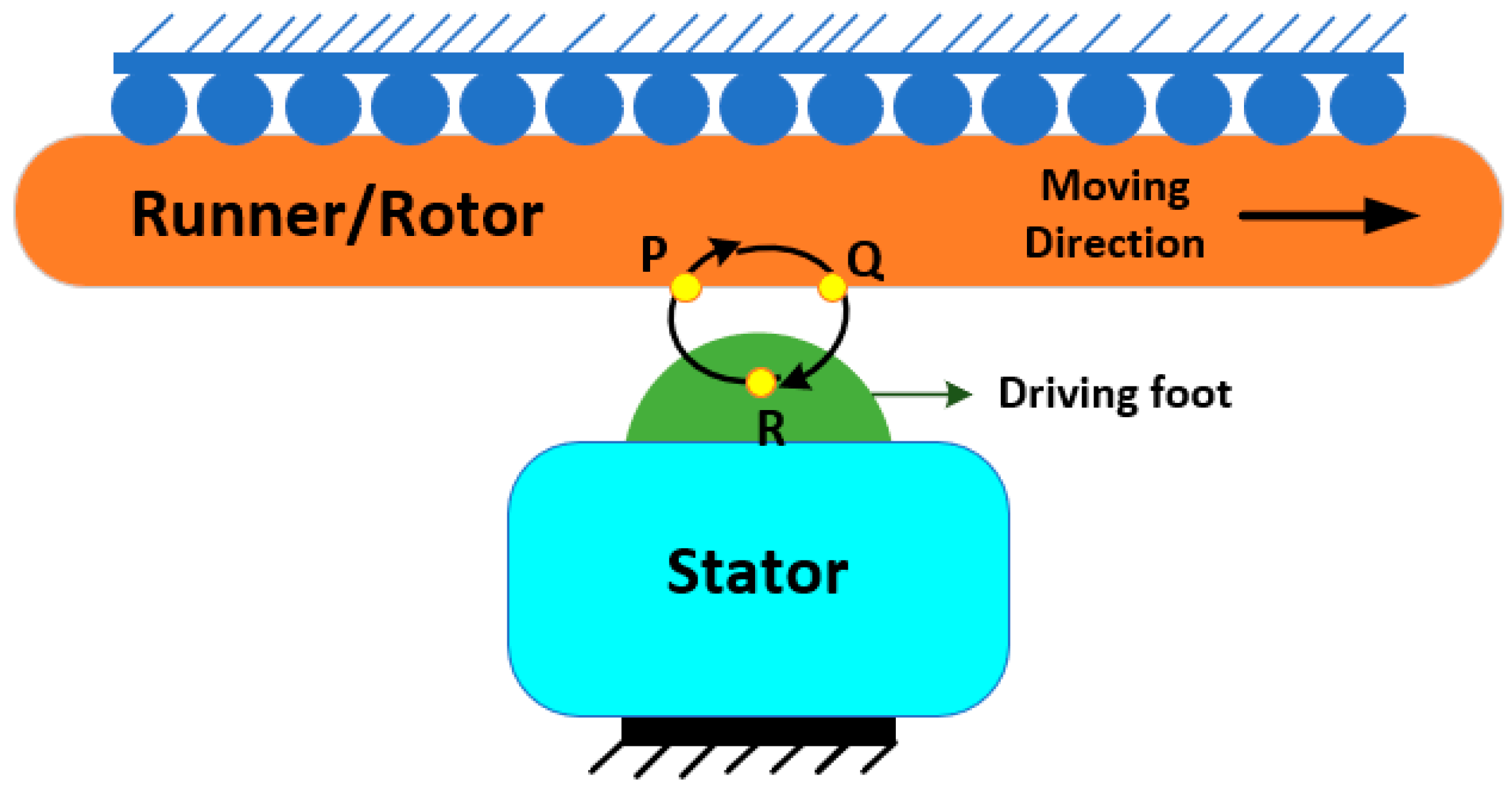
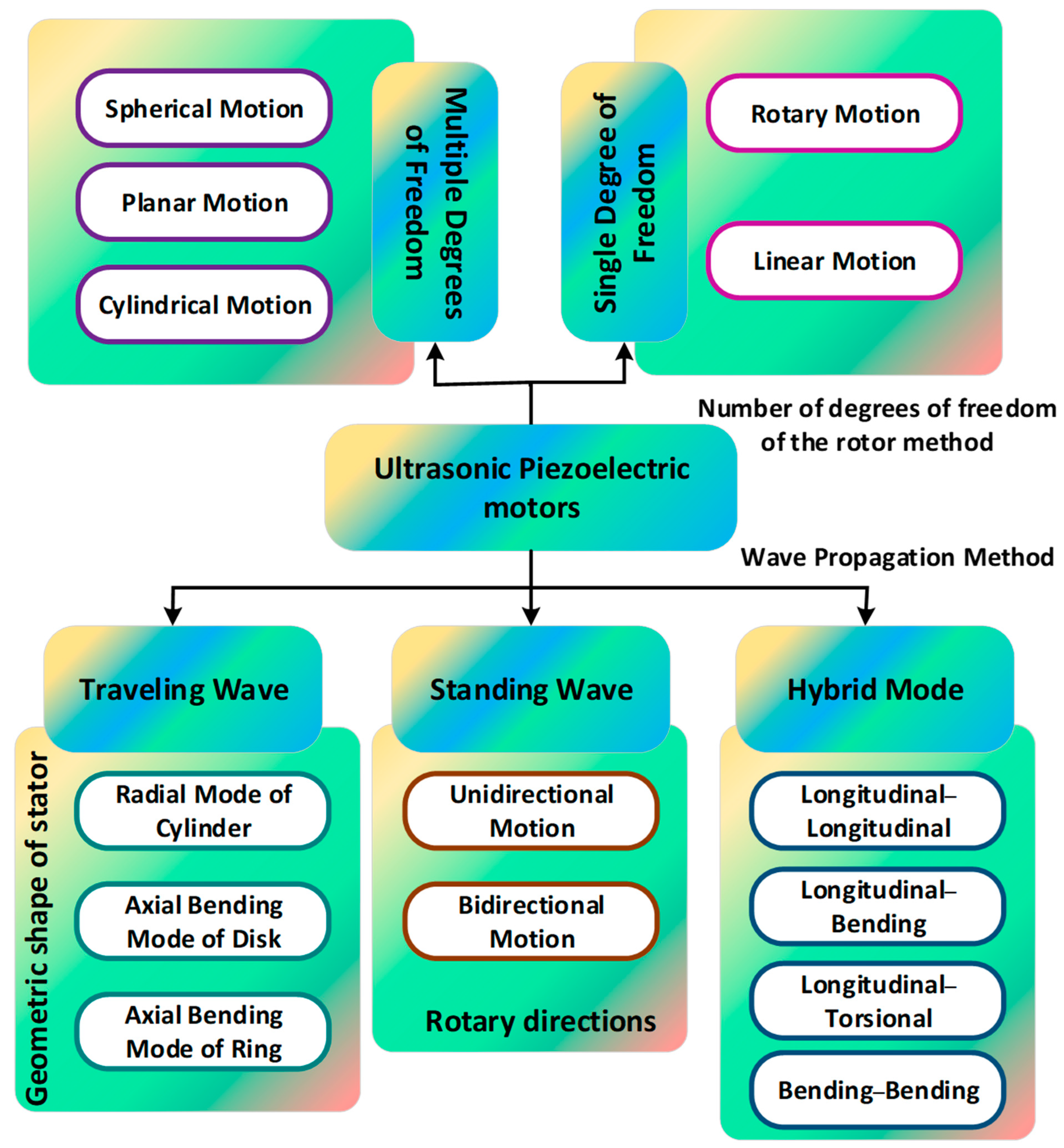
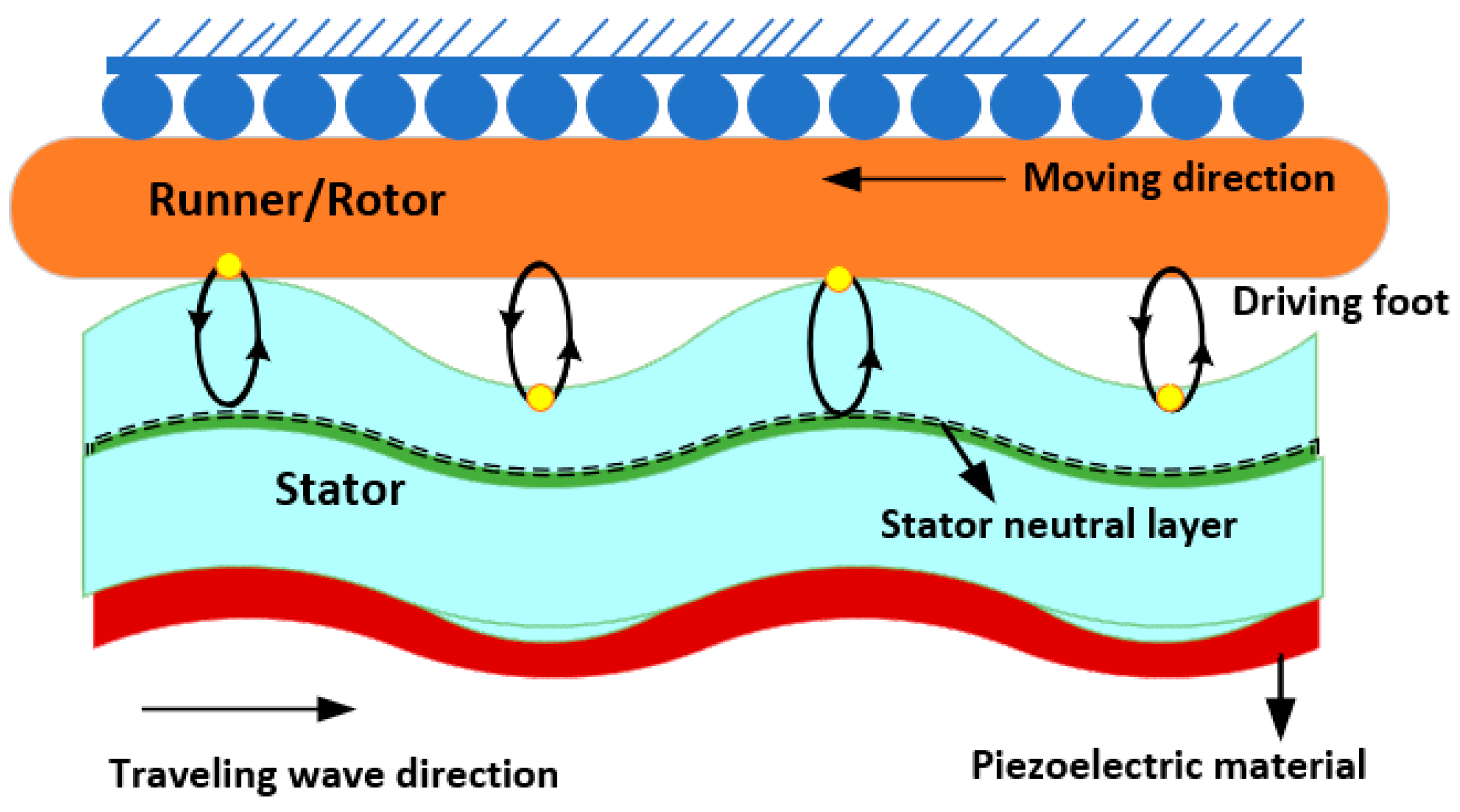
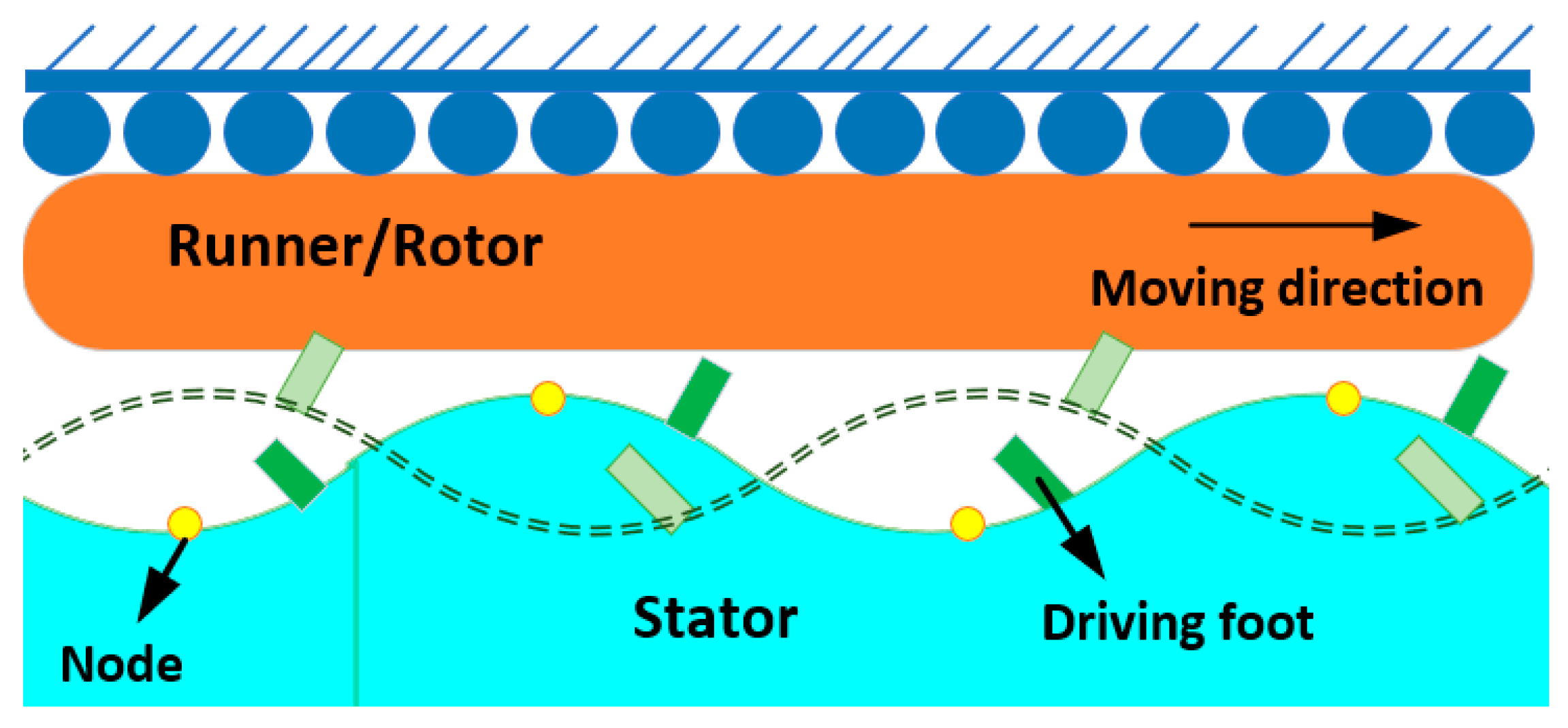
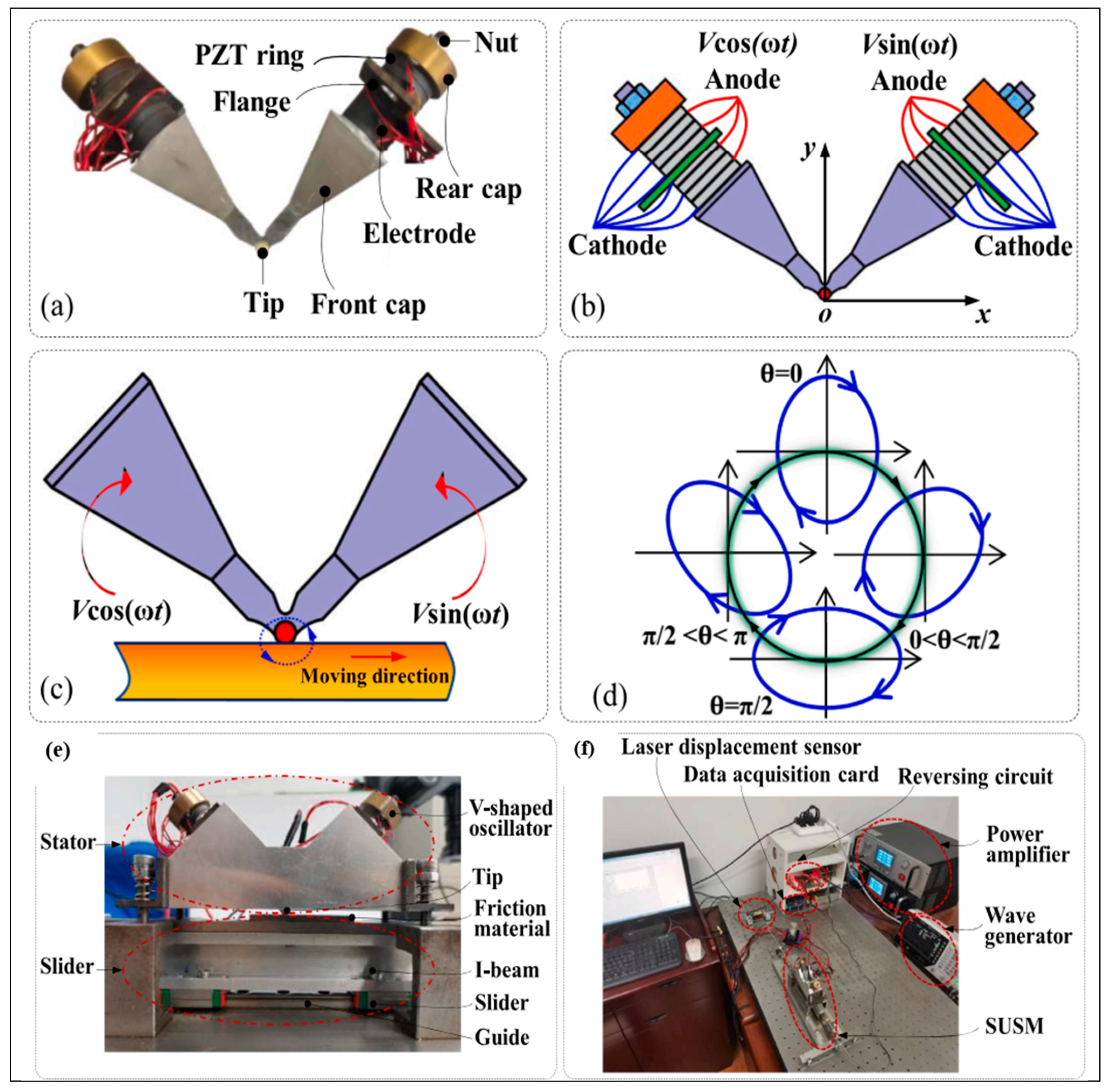
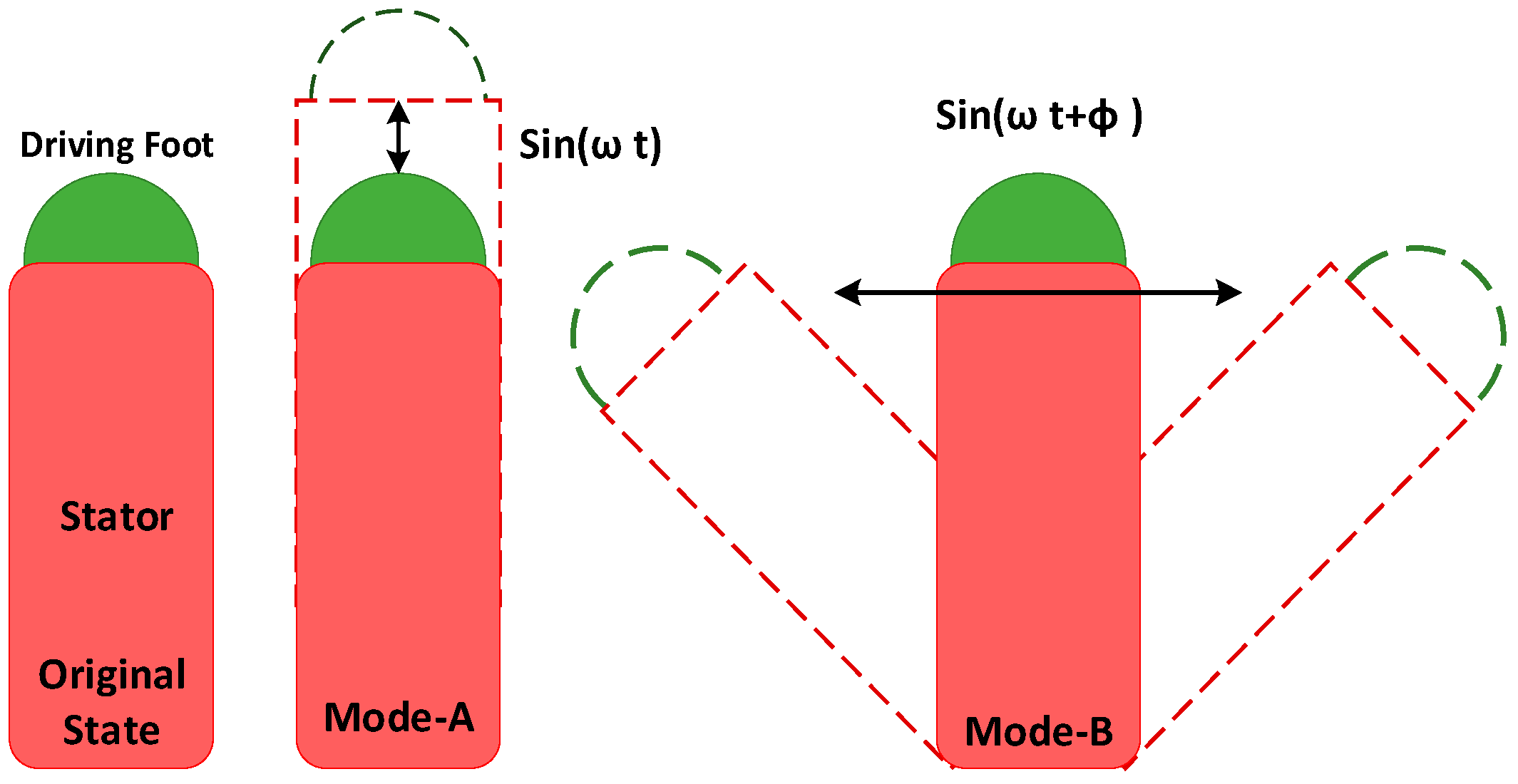
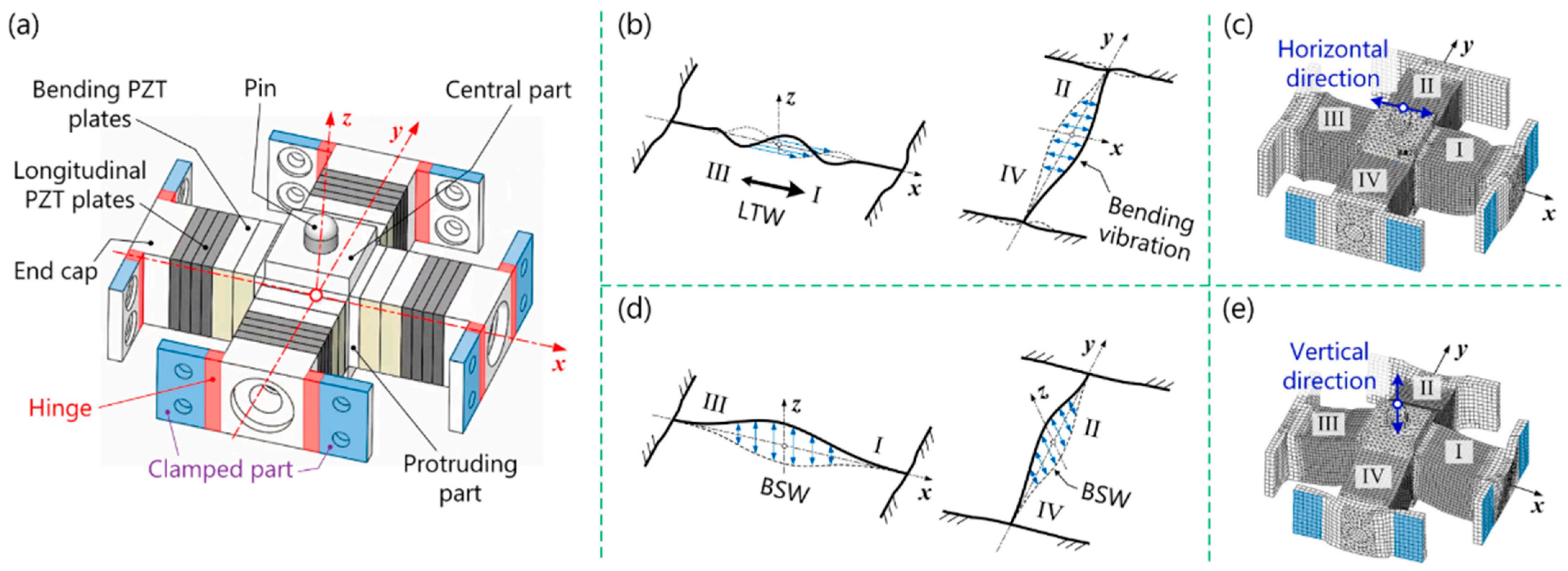

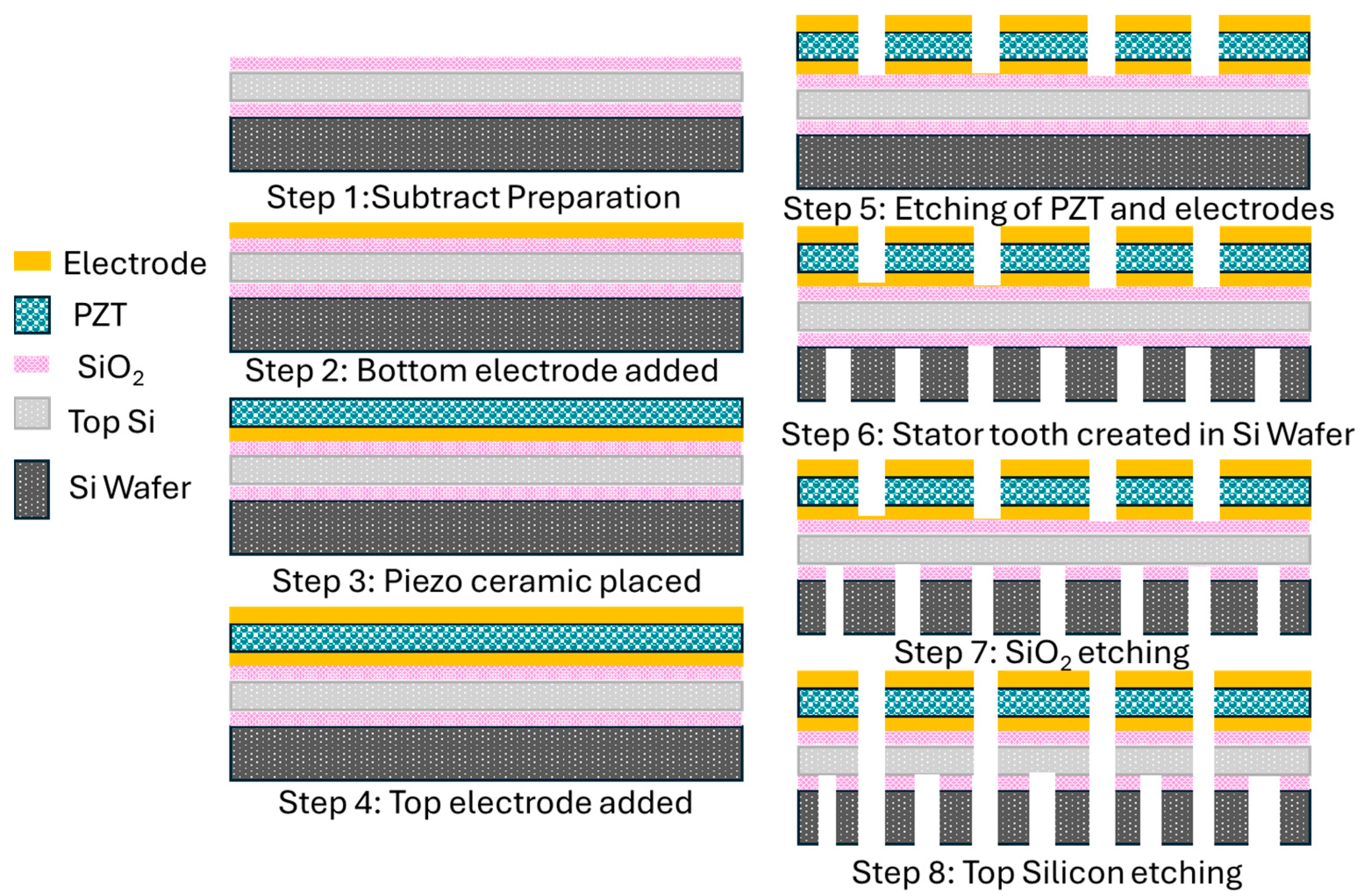

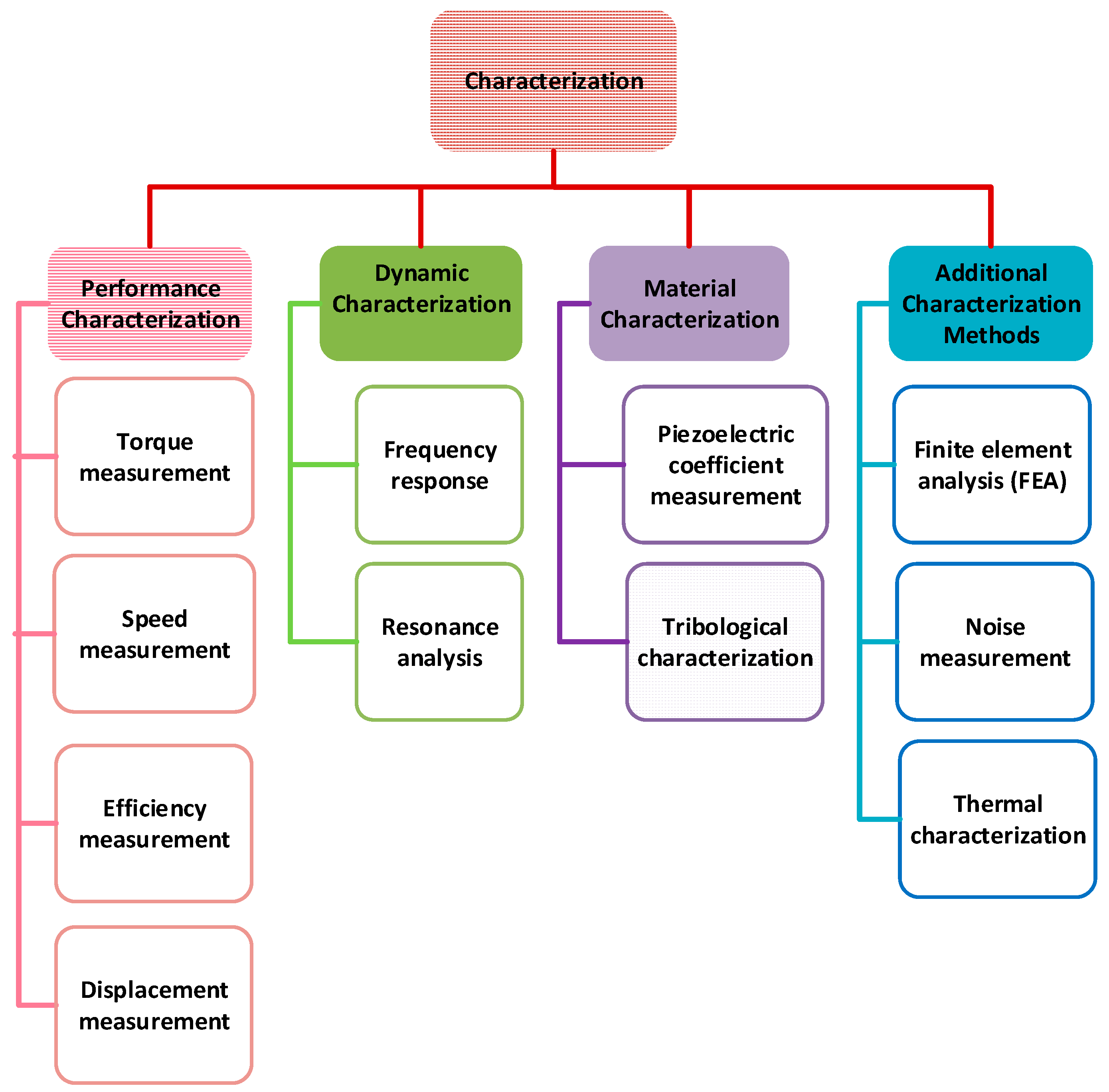
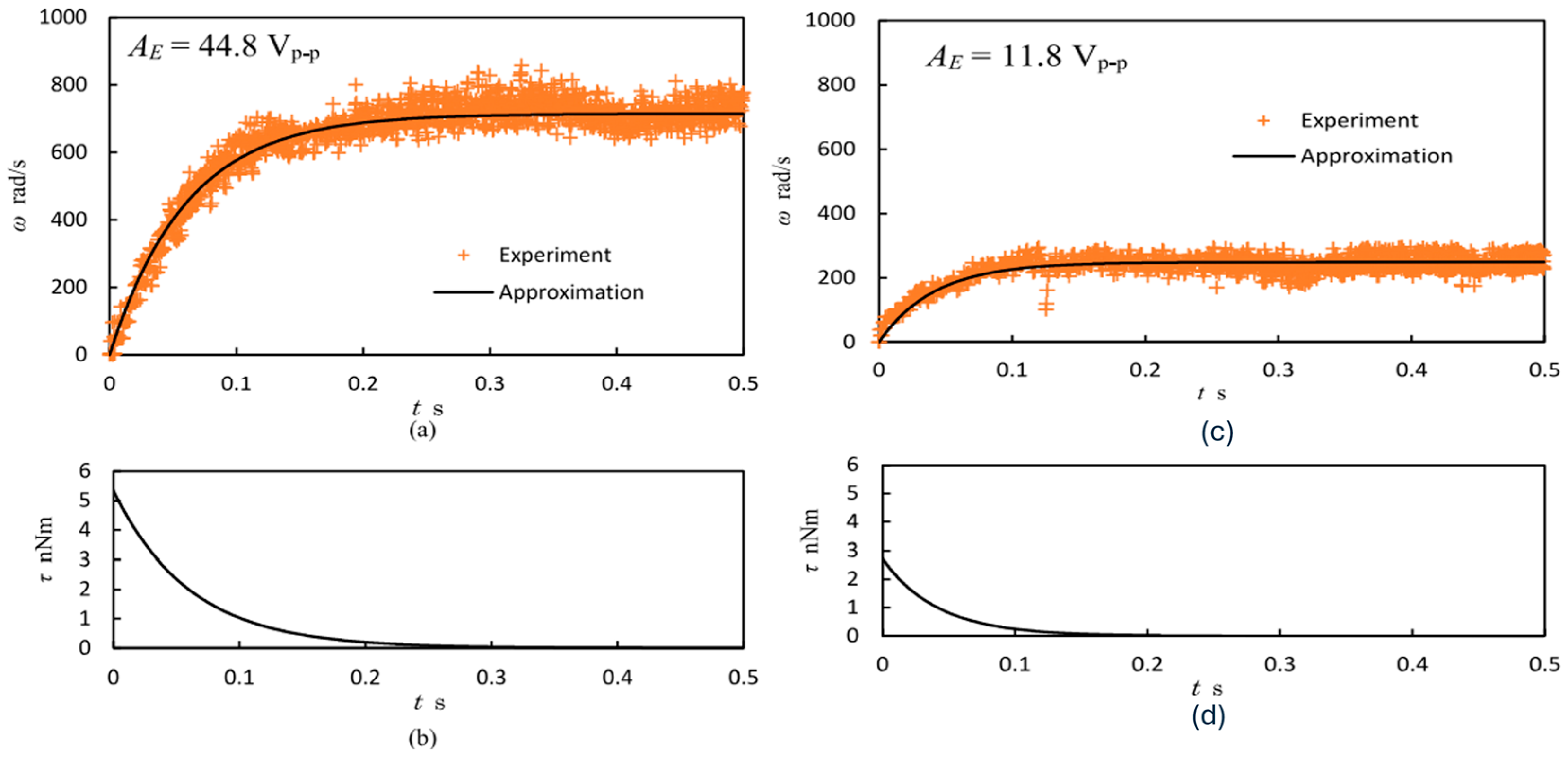
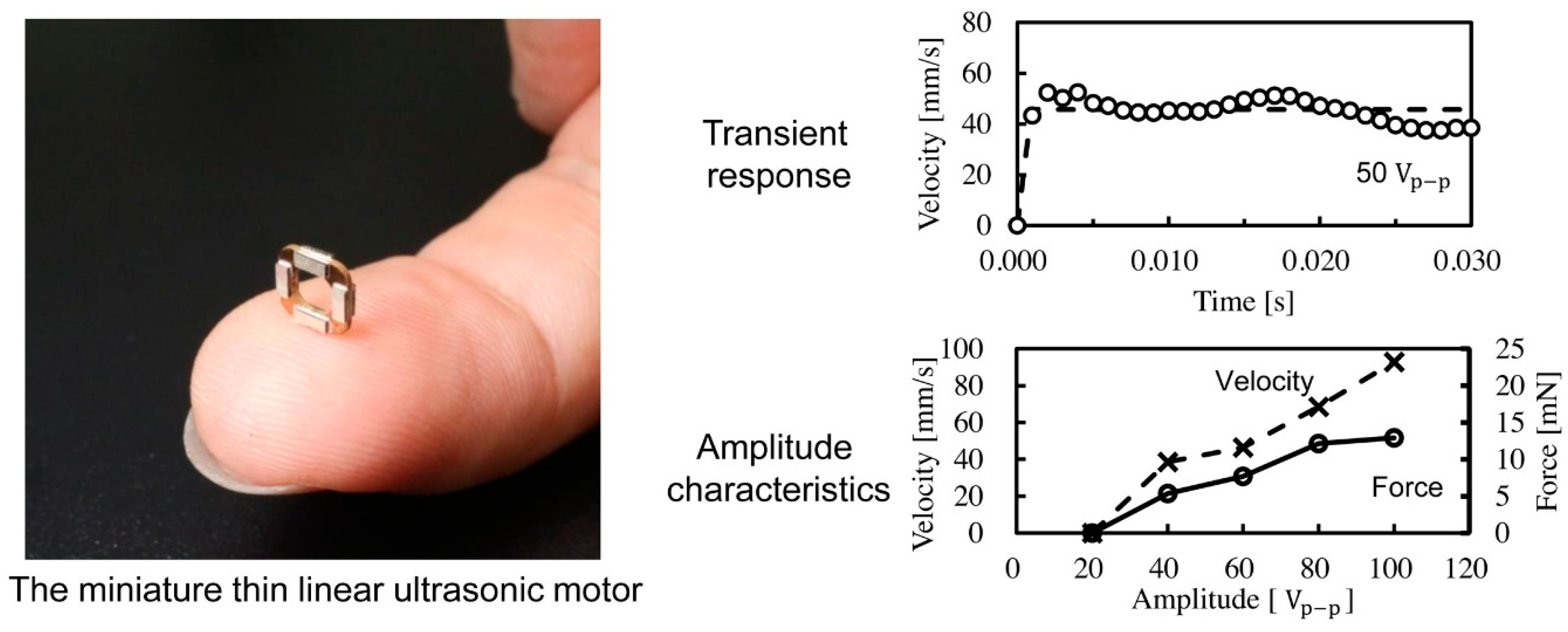
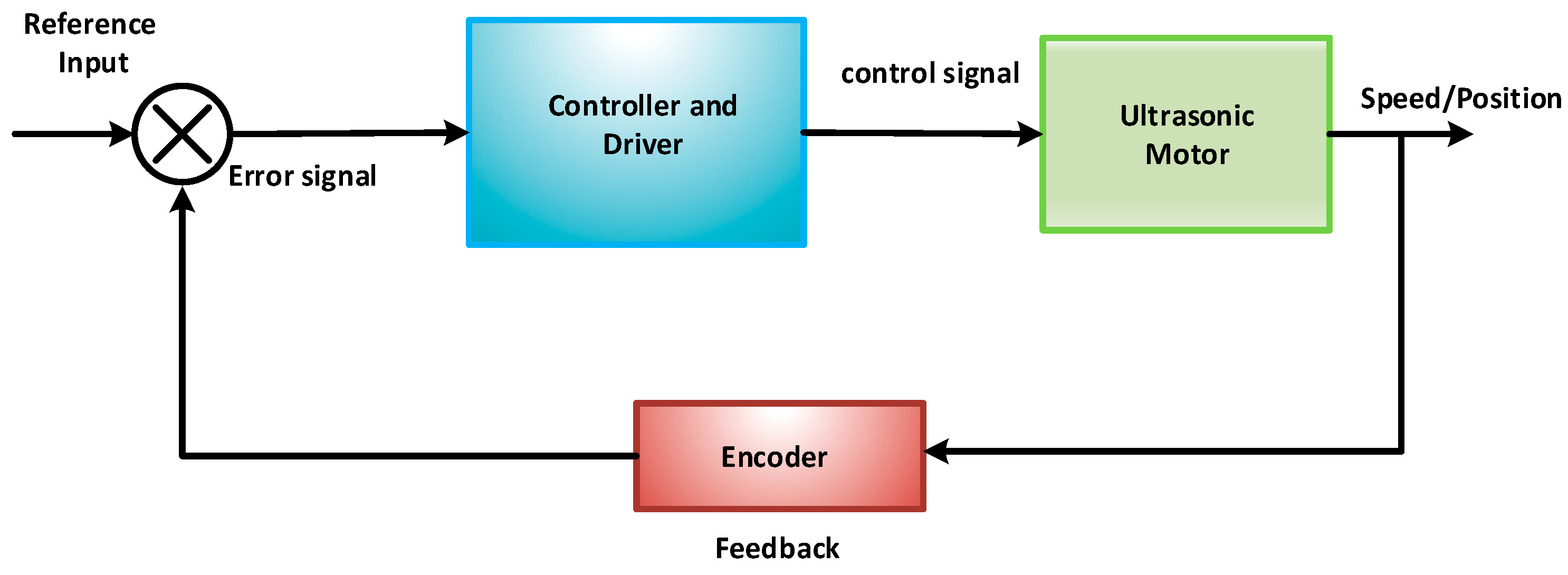
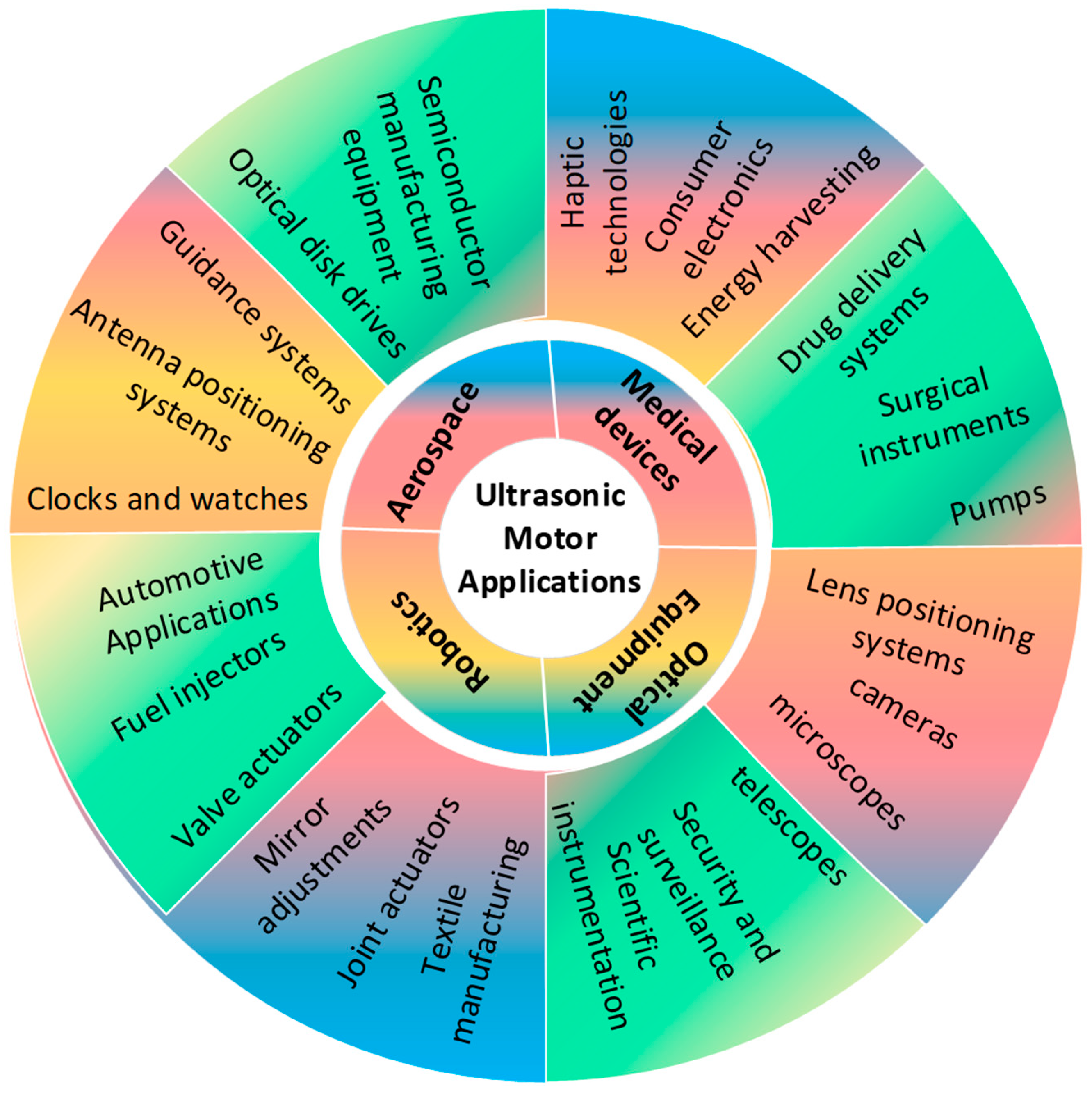

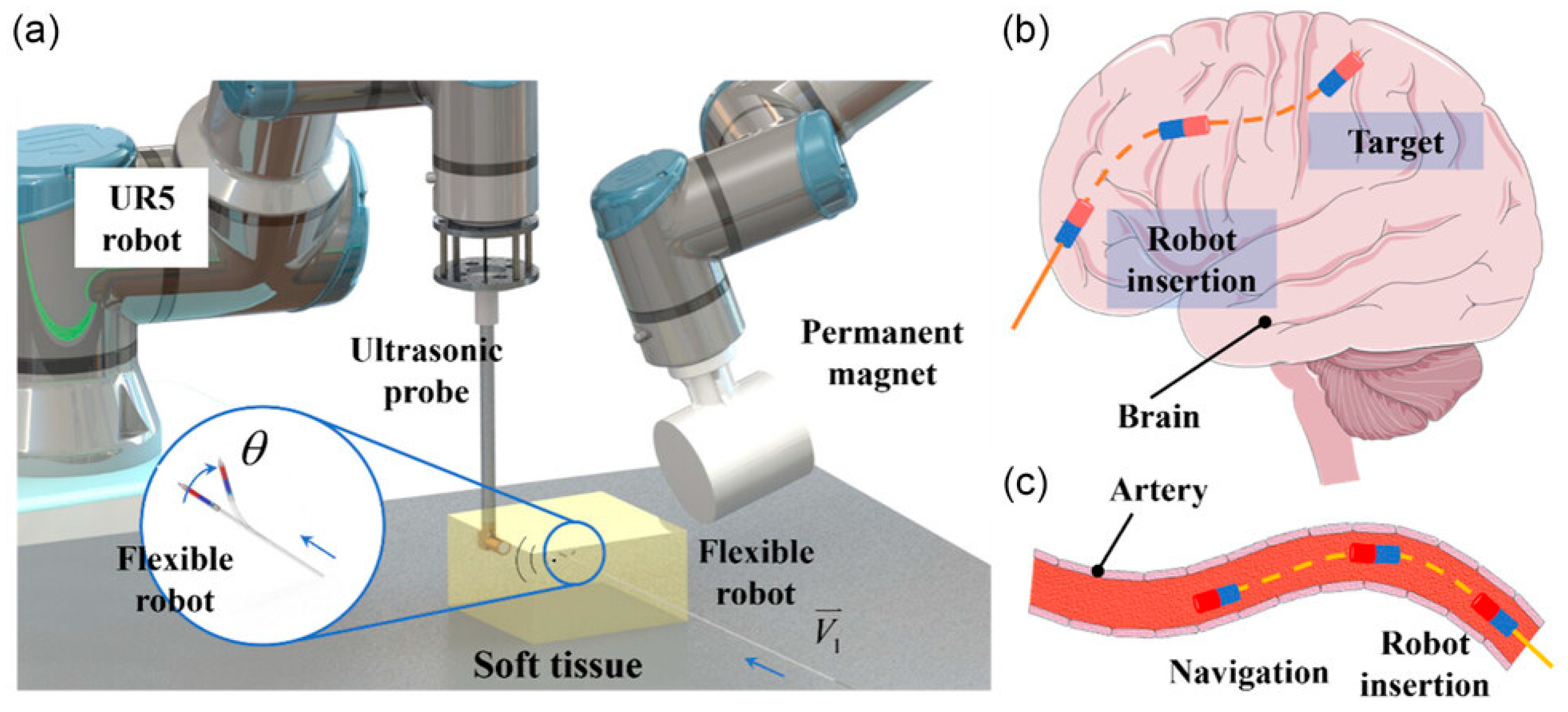
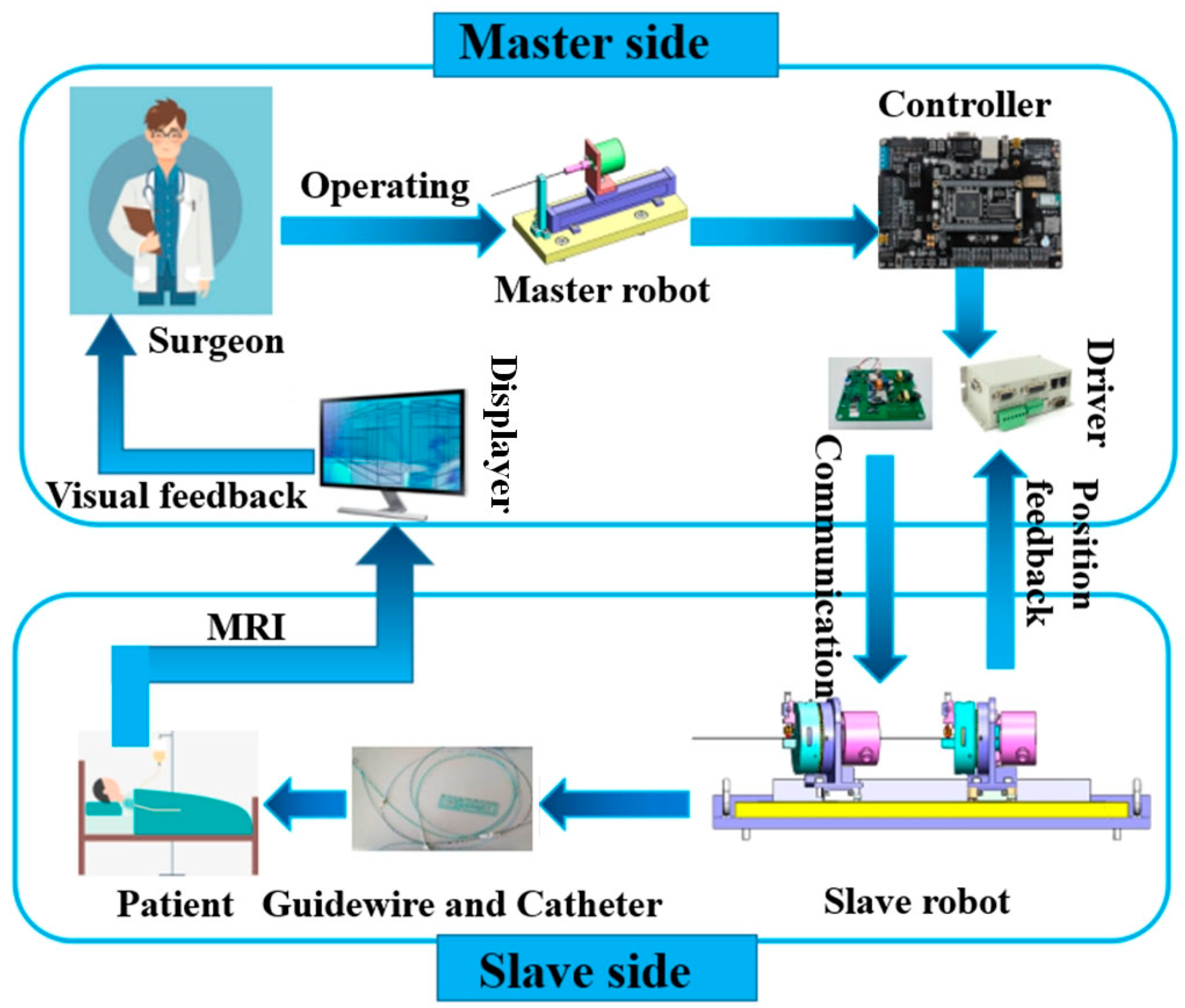

| Material | Characteristics | Advantages | Disadvantages |
|---|---|---|---|
| Lead Zirconate Titanate (PZT) |
|
|
|
| Single-Crystal Piezoelectric Materials (e.g., Lithium Niobate) |
|
|
|
| Lead-Free Piezoelectric Ceramics |
|
|
|
| Piezoelectric Polymers (e.g., PVDF) |
|
|
|
| Feature | Piezoelectric Ultrasonic Motor | Electromagnetic Motor | Electrostatic Motor | Thermal Mechanical Motor | Electro-Conjugate Fluid Motor |
|---|---|---|---|---|---|
| Voltage(I/P) | Lower voltage | Lower voltage | High voltage required | Moderate voltage | Moderate voltage |
| Size and Weight | Compact and lightweight | Bulky due to magnets and coils | Can be bulky and heavy | Can be bulky | Can be complex |
| Suitable Environment | Works in air and vacuum | Affected by magnetic fields | Limited by air breakdown | Sensitive to temperature | Sensitive to leaks |
| Noise | Silent operation | Can be noisy (brushes/gears) | May generate noise | May generate noise | May generate noise |
| Electromagnetic Interference (EMI) | No EMI | Generates EMI | May generate EMI | No EMI | No EMI |
| Low-Speed Torque | High torque at low speeds | Torque decreases at low speeds | Limited torque at low speeds | Limited torque at low speeds | Generally lower torque |
| Response Time | Very fast response time | Can be slow depending on design | Slower response time | Slowest response time | Slower response time |
| Motor Complexity | Simple design | Complex design with moving parts | Complex design | Complex heating/cooling system | Complex fluid dynamics |
| Temperature | Stable performance across a wide range | Performance may be affected | Performance may be affected | Performance may be affected | Performance may be affected |
| Motor Efficiency | High efficiency, especially at low speeds | Varies depending on design | Lower efficiency | Lower efficiency | Lower efficiency |
| Reference | Year | Motion | Stator Type | Size of Piezoceramic (mm) | Voltage | Velocity/Speed | Frequency (kHz) | Force (N) | Torque (Nm) |
|---|---|---|---|---|---|---|---|---|---|
| [71] | 2024 | Rotary | Ring | 12 × 5 × 2 | 500 Vpp | 62 rpm | 40 | 10 | 0.94 |
| [72] | 2023 | Linear | Disk | 9 × 1.65 × 2.7 | 500 Vpp | 19.04 rpm | 19 | 300 | 1.2 |
| [73] | 2023 | - | Ring | 0.5 | 200 Vp | 120 rpm | 41 | 250 | 1.1 |
| [74] | 2023 | - | Radial | 3 × 10−3 | 6 Vpp | >12,000 rpm | 95.2 | 0.05 | 14.89 × 10−6 |
| [75] | 2023 | Rotary | Disk | <10 × 10−3 | 80 Vp | 158 rpm | 41.9 | 40 | 0.073 |
| [76] | 2023 | Rotary | Disk | - | 500 V | 153 rpm | 36.2 | 280 | 1.5 |
| [77] | 2023 | Linear | Cylinder | 15 × 15 | 60 Vpp * | 7.9 mm/s | 96 | - | - |
| [78] | 2021 | - | Ring | 27 × 2 × 0.5 | 200 Vp * | 128.2 rpm | 41 | 250 | 0.9 |
| [79] | 2020 | Rotary | - | 7.5 × 4.2 × 1.5 | 250 Vpp | 53.86 rpm | 24.86 | 0.69 | 0.11 |
| [80] | 2020 | - | - | - | 1.3 Vpp | 160 rpm | 41.5 | - | 1 |
| [81] | 2020 | Rotary | Ring | 0.34 × 0.18 | - | 17.09 rpm | 39.6 | 250 | 0.35 |
| [82] | 2020 | Ring | 60 | 24 Vp | 110 rpm | 37.2 | 200 | 1.2 | |
| [49] | 2020 | Linear | Disk | - | 6 Vpp | 1.7 mm/s | 19.3 | - | - |
| [83] | 2019 | Rotary | Disk | 60 | 30 Vpp | 90 rpm | 0–100 | 60 | 1.5 |
| Reference | Year | Vibrator | Stator Shape | Voltage | Velocity/Speed (m/s) | Frequency (kHz) | Force (N) |
|---|---|---|---|---|---|---|---|
| [93] | 2023 | - | V-shaped | 90 V | 0.2 | 32.2 | 10 |
| [92] | 2023 | linear | V-shaped | 80 Vrms * | 0.23 | 33 | 20 |
| [94] | 2023 | linear | V-shaped | 150 V | - | 39.1 | - |
| [95] | 2021 | linear | V-shaped | 400 Vrms | 0.53 | 39 | 30 |
| [96] | 2020 | linear | V-shaped | 350 Vrms | 1.27 | 38.6 | 80 |
| Reference | Year | Motion/Vibration | Stator Structure | Prototype Size | Voltage | Velocity/Speed | Frequency (kHz) | Force (N) |
|---|---|---|---|---|---|---|---|---|
| [100] | 2022 | Longitudinal–Bending | tuning fork | - | 320 Vpp | 88.67 mm/s | 80.2 | 0.099 |
| [101] | 2022 | Bending–Longitudinal | - | 45.7 × 30 mm2 | 180 Vp | 1103 mm/s | 30.2 | 0.392 |
| [102] | 2020 | Transverse–Shear | disk | 2 × 10 × 4 mm3 | 300 Vpp | 169.4 mm/s | 24.7 | 7.5 |
| [103] | 2020 | Longitudinal–Torsional | cylinder | 10 × 10 × 55 mm3 | 400 Vpp | 483 rpm | 56 | 22 |
| [104] | 2019 | Bending–Bending | planar | 20 × 44 × 30 mm3 | 400 Vpp | 300 µm/s | 0.04 | 1.47 |
| [97] | 2023 | Longitudinal–Bending | disk | 68 × 68 × 28 mm3 | 250 V | 877 mm/s | 27.4 | 40.2 |
| [105] | 2019 | Longitudinal– Bending | disk | 40 × 112 × 38 mm3 | 400 Vpp | 124.2 mm/s | 1.4 | 105 |
| Type of USMs | Characteristic | Advantages | Applications |
|---|---|---|---|
| Standing-Wave USMs | Simple design and manufacturing | Cost-effective automation | Conveyor systems |
| packaging machines | |||
| material handling | |||
| Higher torque output | Precision positioning and control | Robotics | |
| assembly lines | |||
| medical devices | |||
| Traveling-Wave USMs | Wider speed range | Precise movements at different speeds | Satellite positioning and aircraft control systems |
| electric power steering | |||
| window regulators | |||
| Higher power output | Energy generation systems | Wind turbines | |
| wave power generators | |||
| marine and offshore applications | |||
| Automation and manufacturing | Large-scale automated systems | ||
| industrial machinery | |||
| construction equipment | |||
| Hybrid-mode USMs | Enhanced torque and speed | Consumer electronics | Wearable devices |
| cameras | |||
| drones | |||
| Improved efficiency | Energy-efficient automation | Conveyor systems | |
| packaging machines | |||
| Renewable energy systems | Solar tracking | ||
| wind turbines | |||
| Enhanced controllability | Medical devices | Surgical robots | |
| dental equipment |
| Performance-Degrading Characteristics | USMs Are Not Suitable for These Applications |
|---|---|
| Extremely High Speeds | Laser cutting |
| High-Speed Data Storage Devices | |
| High-Performance Robotics | |
| Harsh Environments (high shocks, corrosion, and vibrations) | Oil and Gas Industry |
| Heavy Loads | Heavy Manufacturing, Industrial Machinery, |
| Construction Equipment (crane, bulldozer, etc.) | |
| Outdoor Environments (extreme temperature, humidity, and contaminants) | Marine Environments |
| Desert Environments | |
| Chemical Industries |
| Method | Techniques | Considerations | Advantages |
|---|---|---|---|
| Thin-Film Deposition | CVD | Cost | Complex designs |
| Sputtering | Performance of thin films | Miniaturization | |
| EHJ printing | Dedicated apparatus | Remove the need of bonding process | |
| LGA | X-ray lithography | Expert tools, | Good quality surface, Raised proportions of aspects of metal structures |
| Electroplating | Complex process, | ||
| Molding | limited materials | ||
| Micromachining | RIE, | Surface roughness, | Intricate characteristics, Combines thin-film deposition processes |
| Photolithography, | Multi-step process, | ||
| DRIE | residual stress |
| Characteristic | Equipment | Technique |
|---|---|---|
| Torque | Torque meter | Static or dynamic load application [130] |
| load cell [130,134] | pre-load mechanisms | |
| custom test configuration | ||
| Speed and Velocity | Tachometer | Transient characterization method [130,135] |
| laser Doppler vibrometer [131] | direct measurement | |
| encoders | frequency sweep techniques | |
| Efficiency | Power supply | Calculation of mechanical output power/electrical input power |
| load cell | Frequency sweep techniques | |
| tachometer | Torque x angular speed/input power [136] | |
| multimeter | ||
| Vibration | Accelerometer | Measurement of vibration levels and patterns [131] |
| laser scanner vibrometer | ||
| Strain | Strain gauge | Non-contact optical method |
| Digital image correlation | ||
| Interferometry | High-precision technique | |
| Temperature | Thermocouple or thermistor | Monitoring temperature distribution |
| Noise | Sound level meter | Measurement of acoustic noise |
| Electric parameters | Multimeter | Direct measurement of current and voltage |
| Friction and wear | Tribometer | Simulation of operating conditions |
| Piezoelectric coefficient | Berlincourt meter | Quasi-static method |
| d33 meter | ||
| laser interferometry | ||
| Holding force | Load cell | Measurement of maximum static load |
| Frequency response | Signal generator | Inputting varying frequency signals and measuring the response |
| Power amplifier | ||
| laser Doppler vibrometer | ||
| Spectrum analyzer | ||
| Resonance | Signal generator | Identification of resonant frequencies and mode shapes |
| power amplifier | Frequency sweep techniques | |
| laser Doppler vibrometer | ||
| spectrum analyzer | ||
| Impedance | Impedance analyzer [138] | Direct measurement |
| LCR meter | Vectorial measurements | |
| Network analyzer | S-parameters [139] | |
| Oscilloscope | ||
| Displacement angular acceleration | Linear variable differential | Measurement of linear or angular displacement [131] |
| transformer | Newton’s second law [135] | |
| laser triangulation sensor | ||
| laser displacement sensor | ||
| laser interferometer | ||
| linear encoder | ||
| Quality factor | Bode plot | Bode plot [131] |
| Characteristic | Importance | Fields | Applications |
|---|---|---|---|
| High Precision and Resolution | Allows precise and intricate motions, Allowing for accurate placement and providing manipulation at the micrometer scale. | Minimally invasive surgery | Instrument control |
| Aerospace | Antenna pointing | ||
| Telescope adjustment | |||
| Biomedical engineering | Drug delivery | ||
| Microfluidic devices | |||
| Industrial automation | Robotic assembly | ||
| Laser cutting | |||
| Fast Response and Speed | Enables fast operation and swift adjustments in position using speedy start–stop and motion functions. | Industrial automation | Assembly lines |
| Material handling | |||
| Biomedical engineering | Pumps | ||
| Microfluidic devices | |||
| Silent Operation | Essential for locations that are sensitive to noise by producing minimum noise. | Minimally invasive surgery | Improved patient comfort |
| Quieter surgical environment | |||
| Improved communication and collaboration of surgical teams | |||
| Biomedical engineering | Medical pumps | ||
| Diagnostic equipment | |||
| Implantable devices | |||
| Aerospace | Minimizing acoustic disturbances | ||
| Microgravity experiments | |||
| No Electromagnetic Interference (EMI) | Ensures optimal performance in the proximity of delicate electronic devices while preventing electromagnetic interference (EMI) disturbances. | Biomedical engineering | Implantable devices |
| Industrial automation | Environments with sensitive electronics | ||
| Medical device production and assembly | |||
| Applications requiring sparks or flammable materials | |||
| Aerospace | Safeguarding sensitive electronics | ||
| Compatibility with scientific equipment | |||
| Reduced risk of signal interference | |||
| Compact Size and Light Weight | Enables reduction in size of instruments and decreases the total weight. | Minimally invasive surgery | Surgical tools |
| Aerospace | Spacecraft design | ||
| Biomedical engineering | Implantable devices | ||
| Harsh Environment Tolerance | Capable of functioning in harsh conditions such as severe temperatures, radiation, and vacuum, making it indispensable for space operations. | Aerospace | Satellite components |
| Deployment mechanisms | |||
| Low Power Consumption | Conserves energy and prolongs battery lifespan in circumstances with limited resources. | Aerospace | Spacecraft design |
| Biomedical engineering | Implantable devices |
Disclaimer/Publisher’s Note: The statements, opinions and data contained in all publications are solely those of the individual author(s) and contributor(s) and not of MDPI and/or the editor(s). MDPI and/or the editor(s) disclaim responsibility for any injury to people or property resulting from any ideas, methods, instructions or products referred to in the content. |
© 2024 by the authors. Licensee MDPI, Basel, Switzerland. This article is an open access article distributed under the terms and conditions of the Creative Commons Attribution (CC BY) license (https://creativecommons.org/licenses/by/4.0/).
Share and Cite
Naz, S.; Xu, T.-B. A Comprehensive Review of Piezoelectric Ultrasonic Motors: Classifications, Characterization, Fabrication, Applications, and Future Challenges. Micromachines 2024, 15, 1170. https://doi.org/10.3390/mi15091170
Naz S, Xu T-B. A Comprehensive Review of Piezoelectric Ultrasonic Motors: Classifications, Characterization, Fabrication, Applications, and Future Challenges. Micromachines. 2024; 15(9):1170. https://doi.org/10.3390/mi15091170
Chicago/Turabian StyleNaz, Sidra, and Tian-Bing Xu. 2024. "A Comprehensive Review of Piezoelectric Ultrasonic Motors: Classifications, Characterization, Fabrication, Applications, and Future Challenges" Micromachines 15, no. 9: 1170. https://doi.org/10.3390/mi15091170







